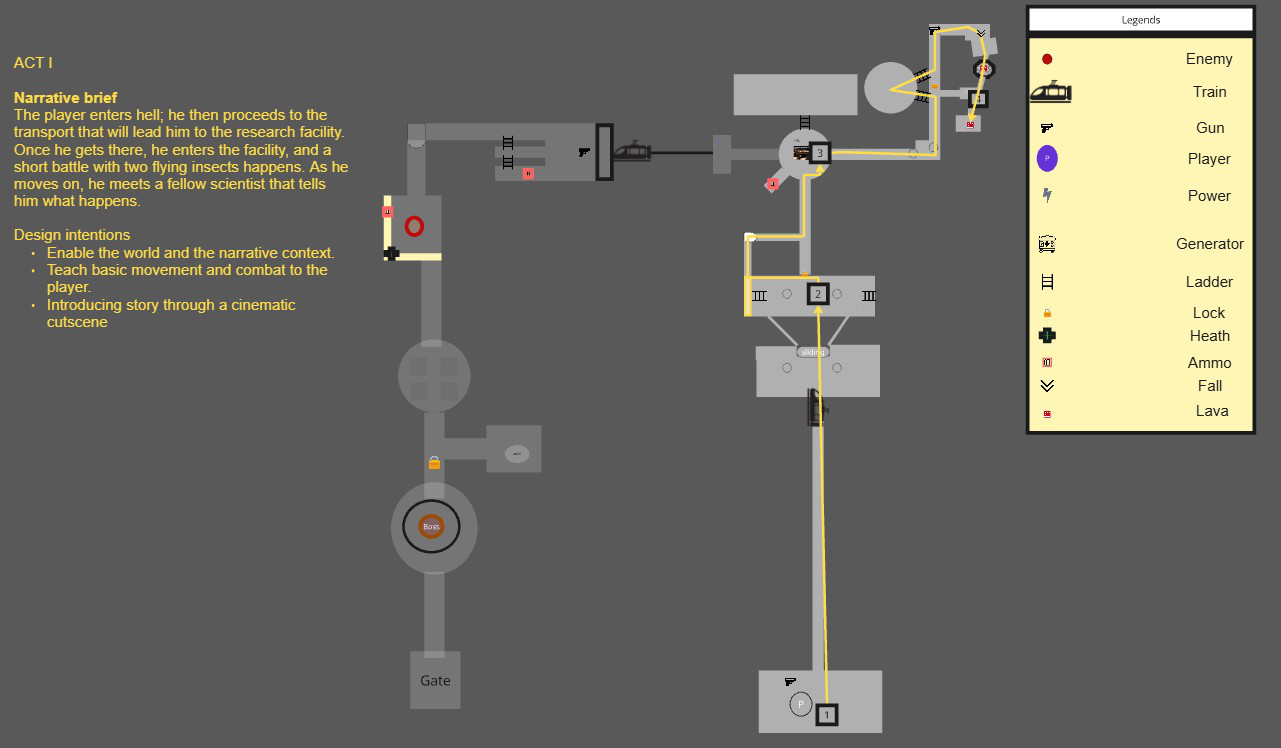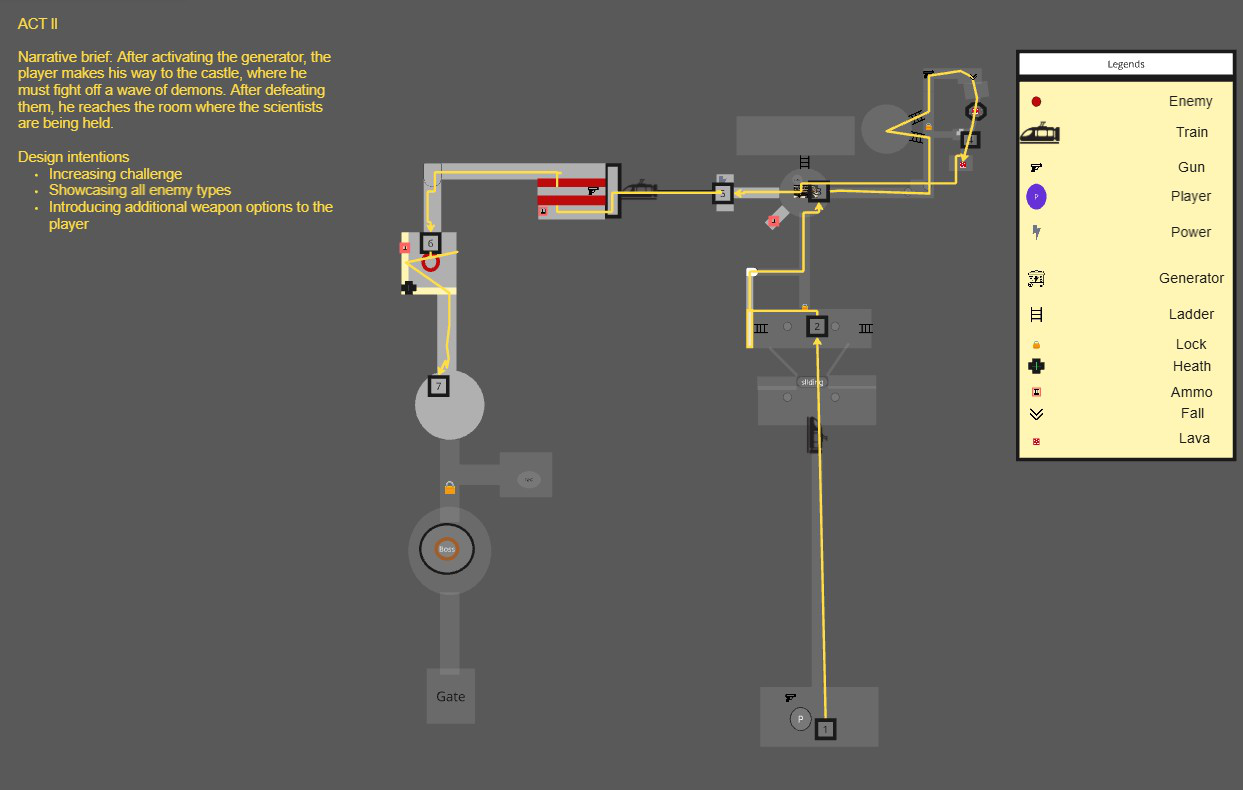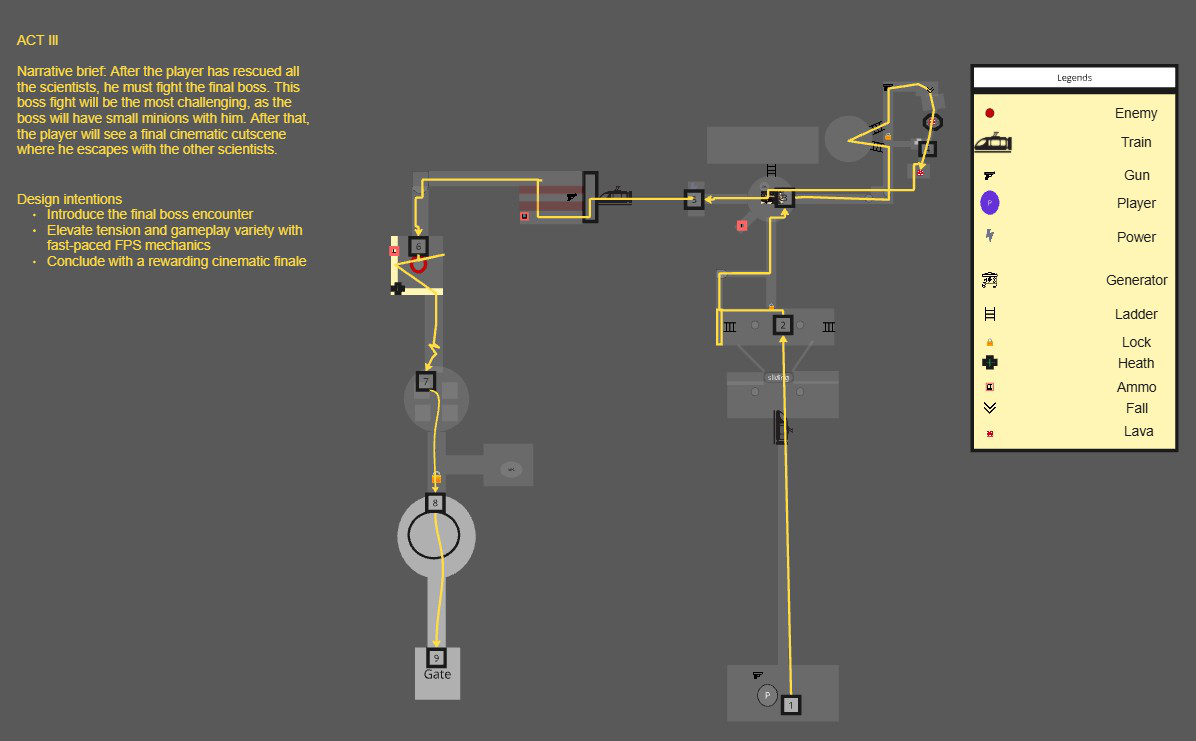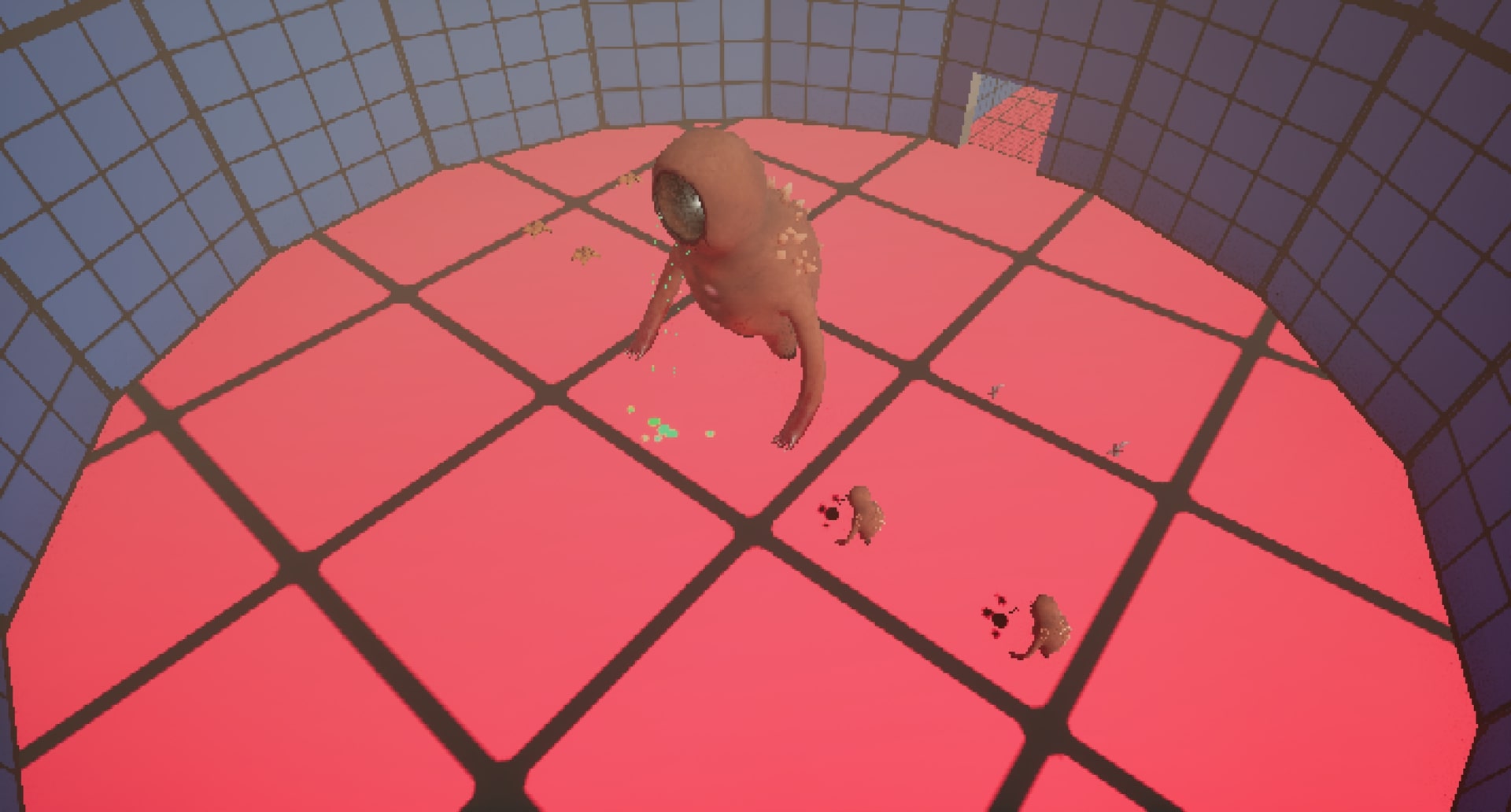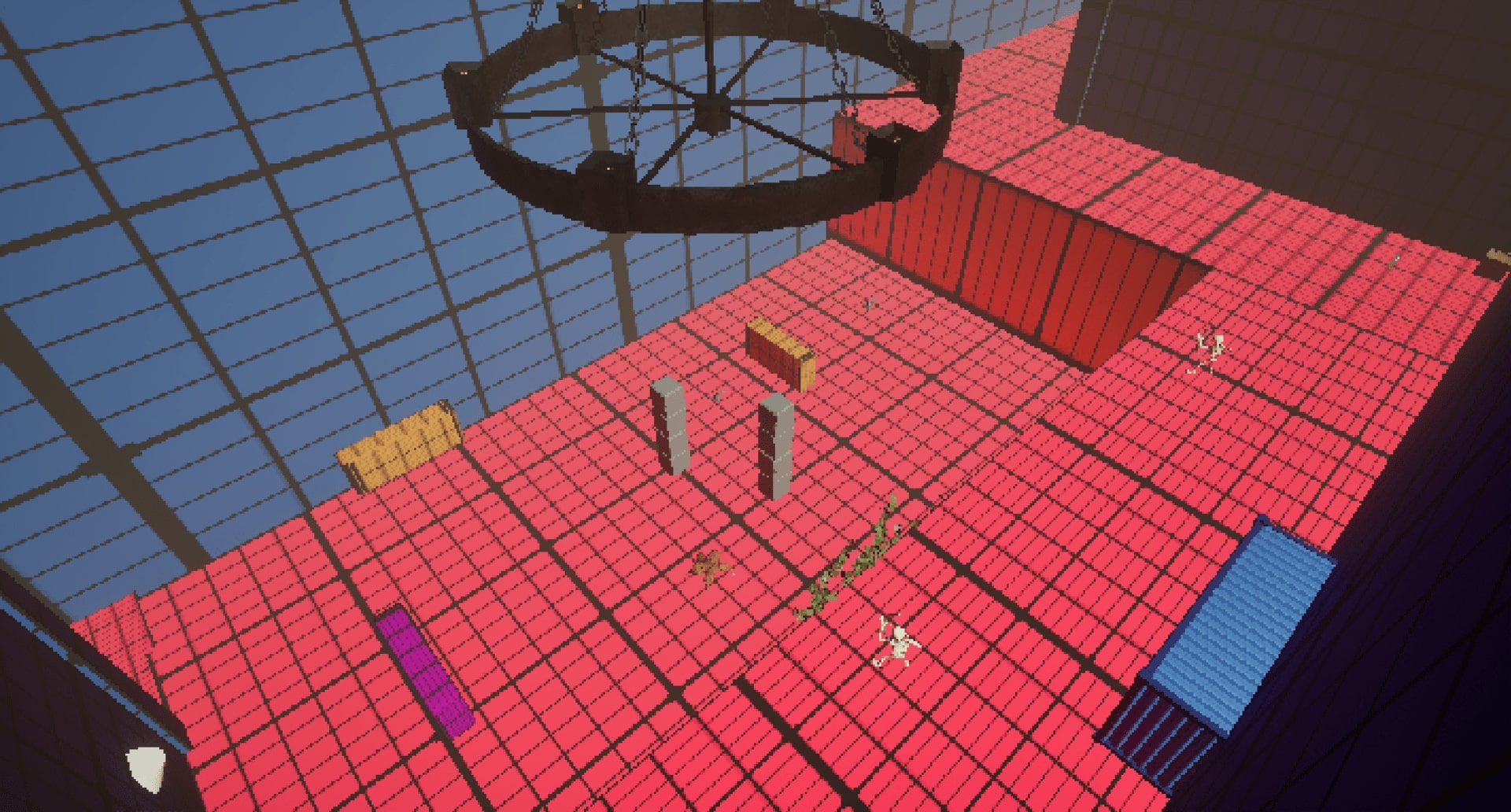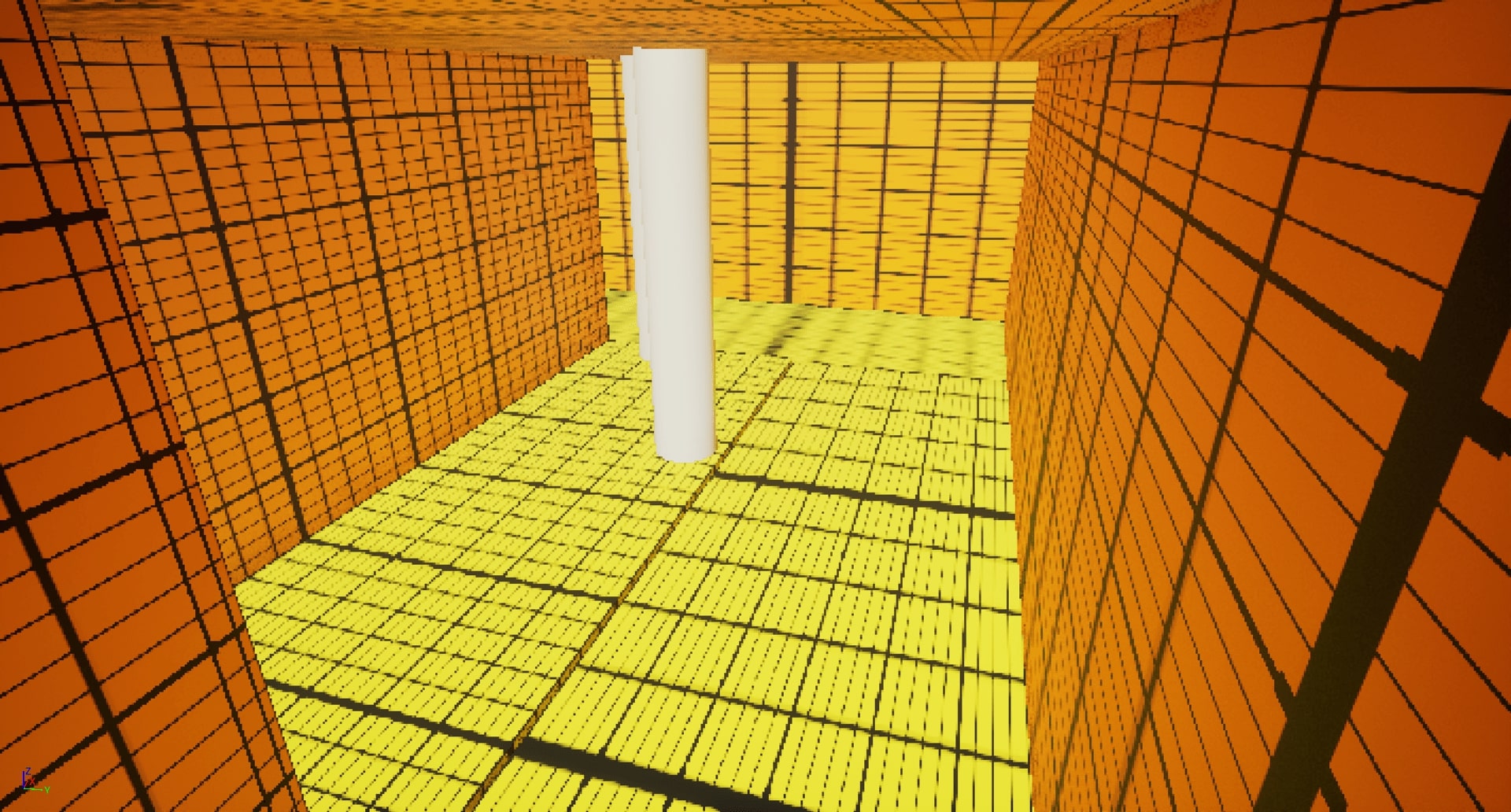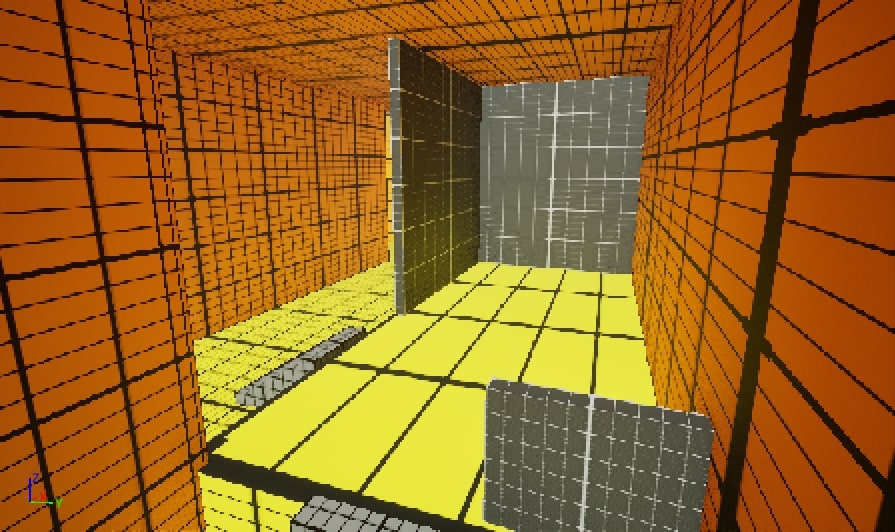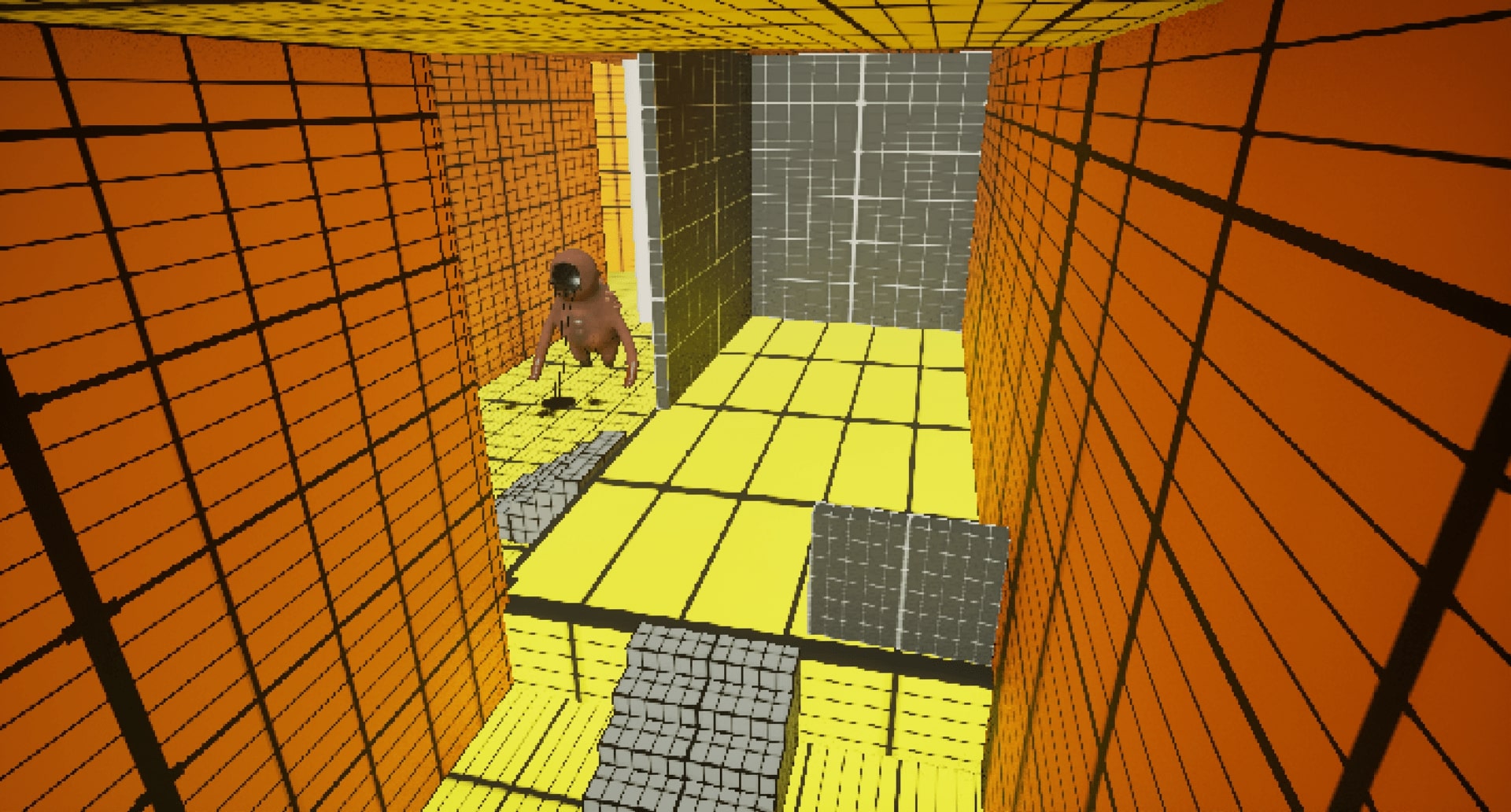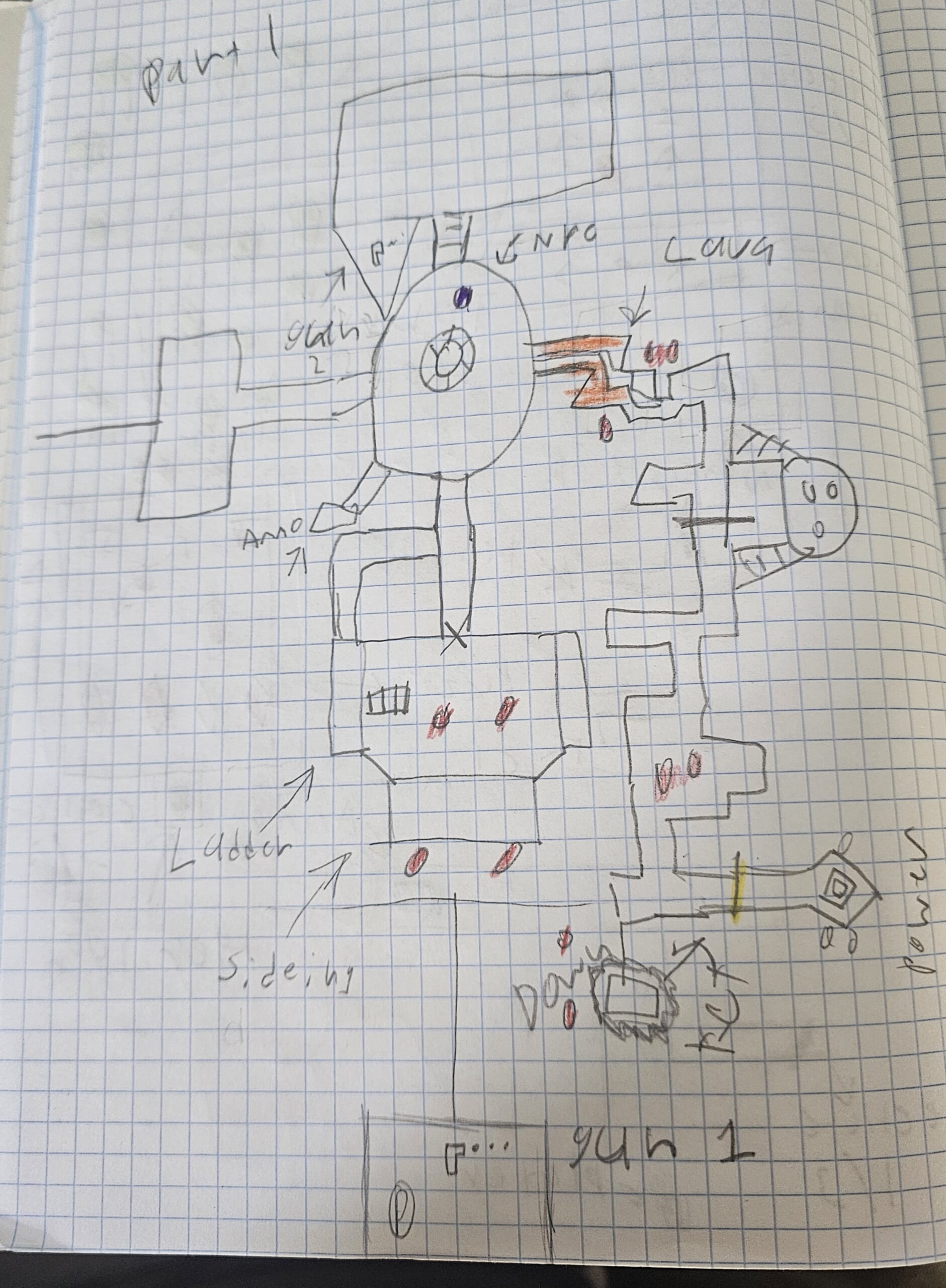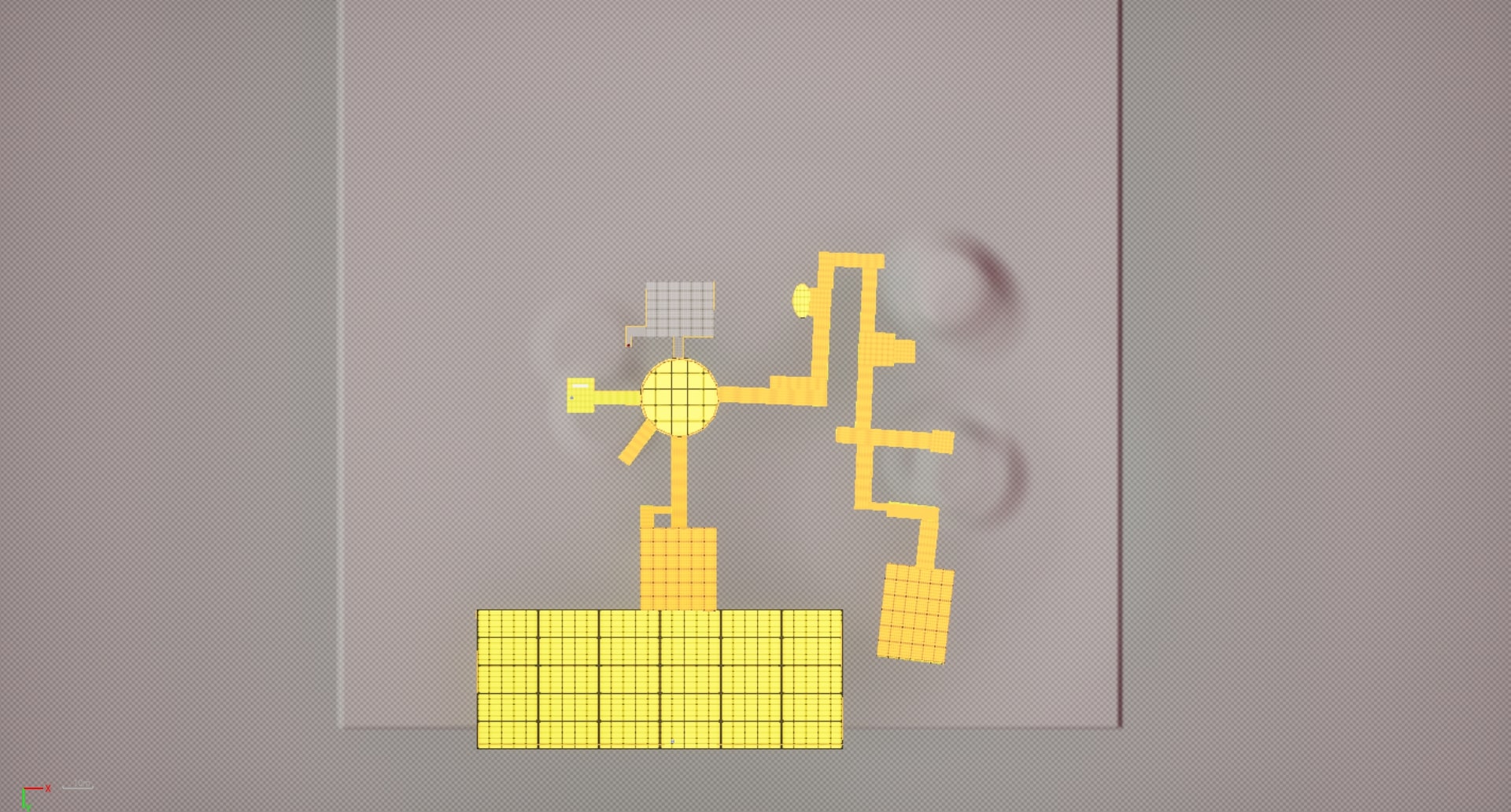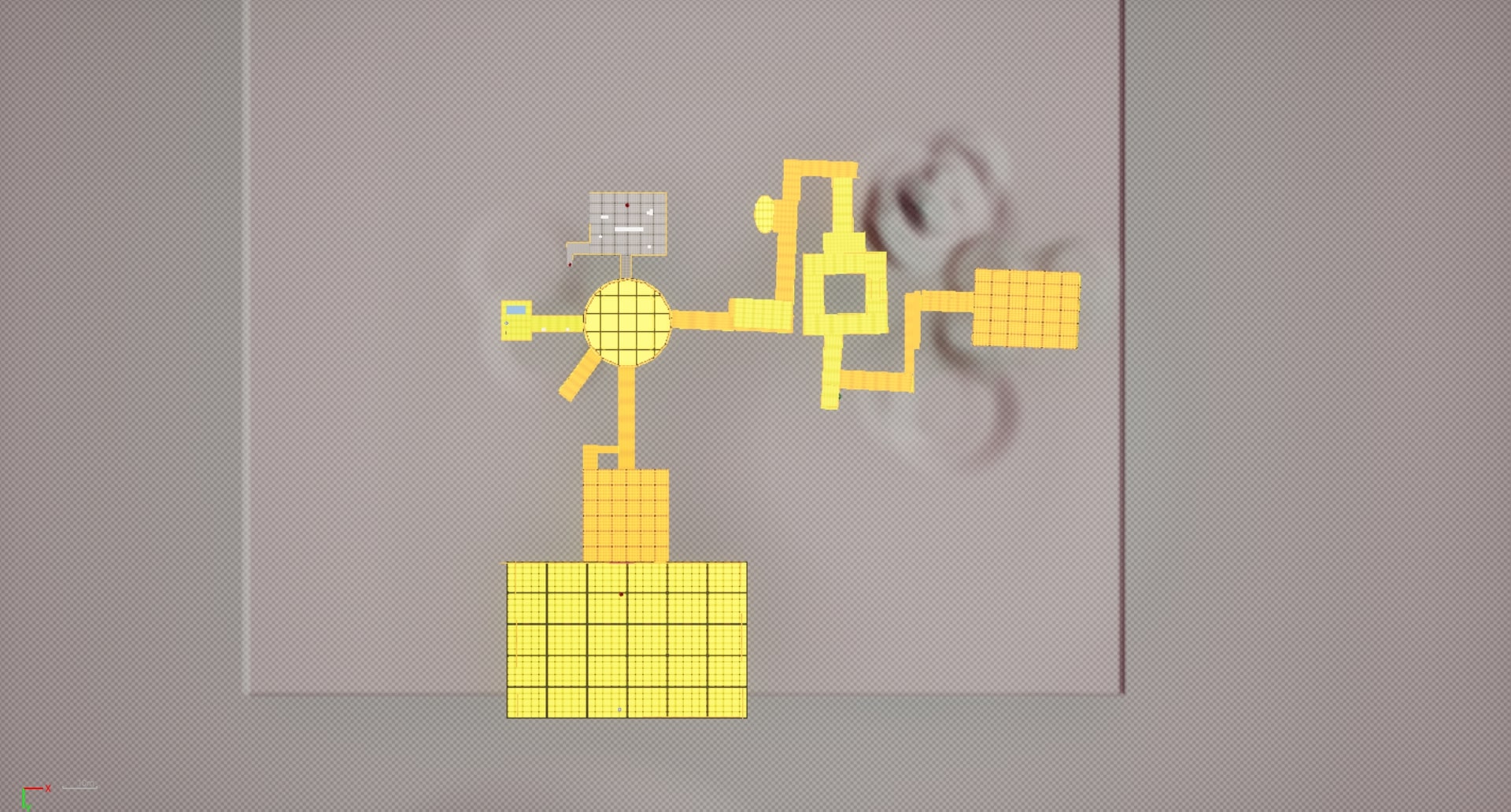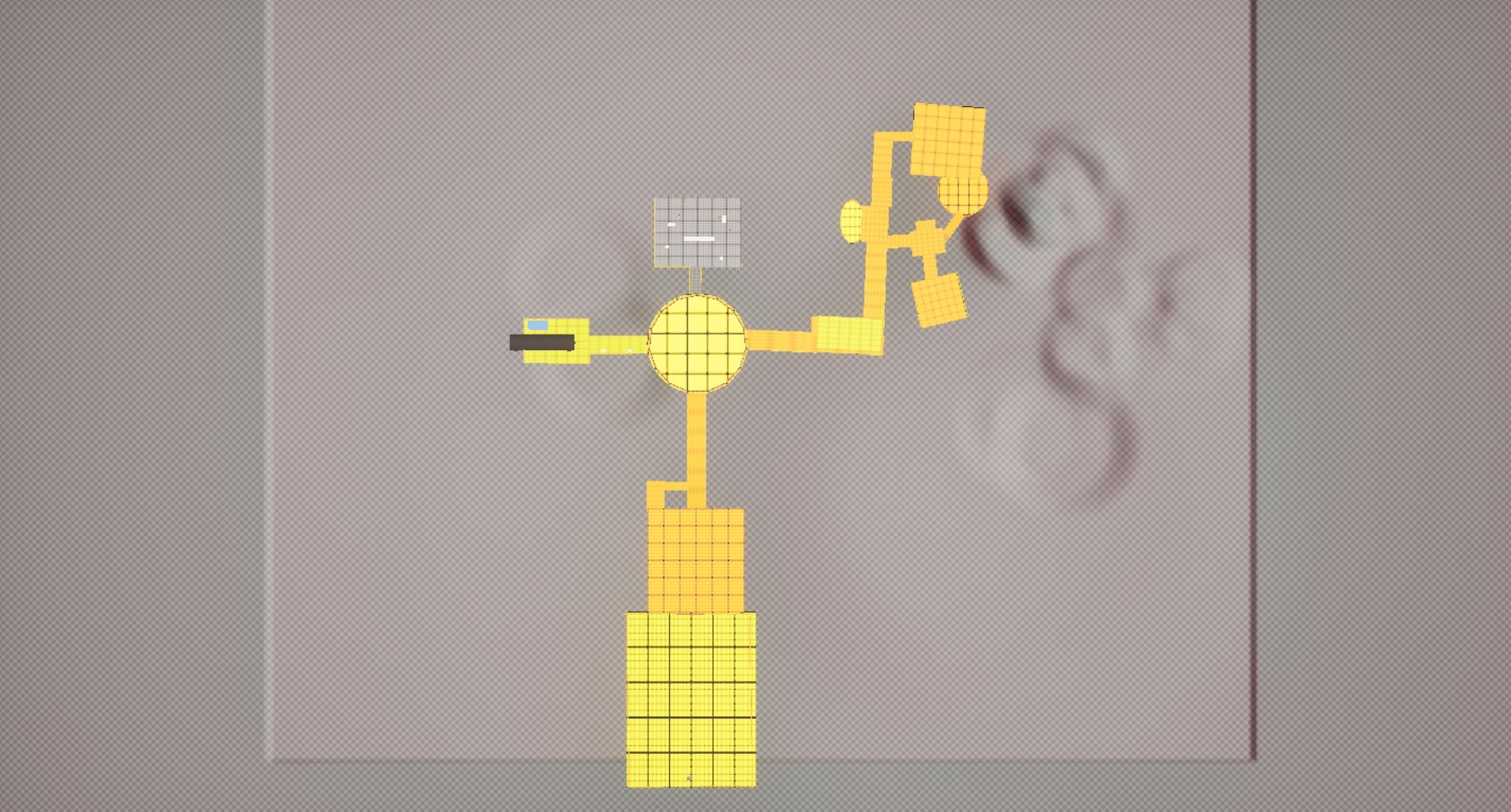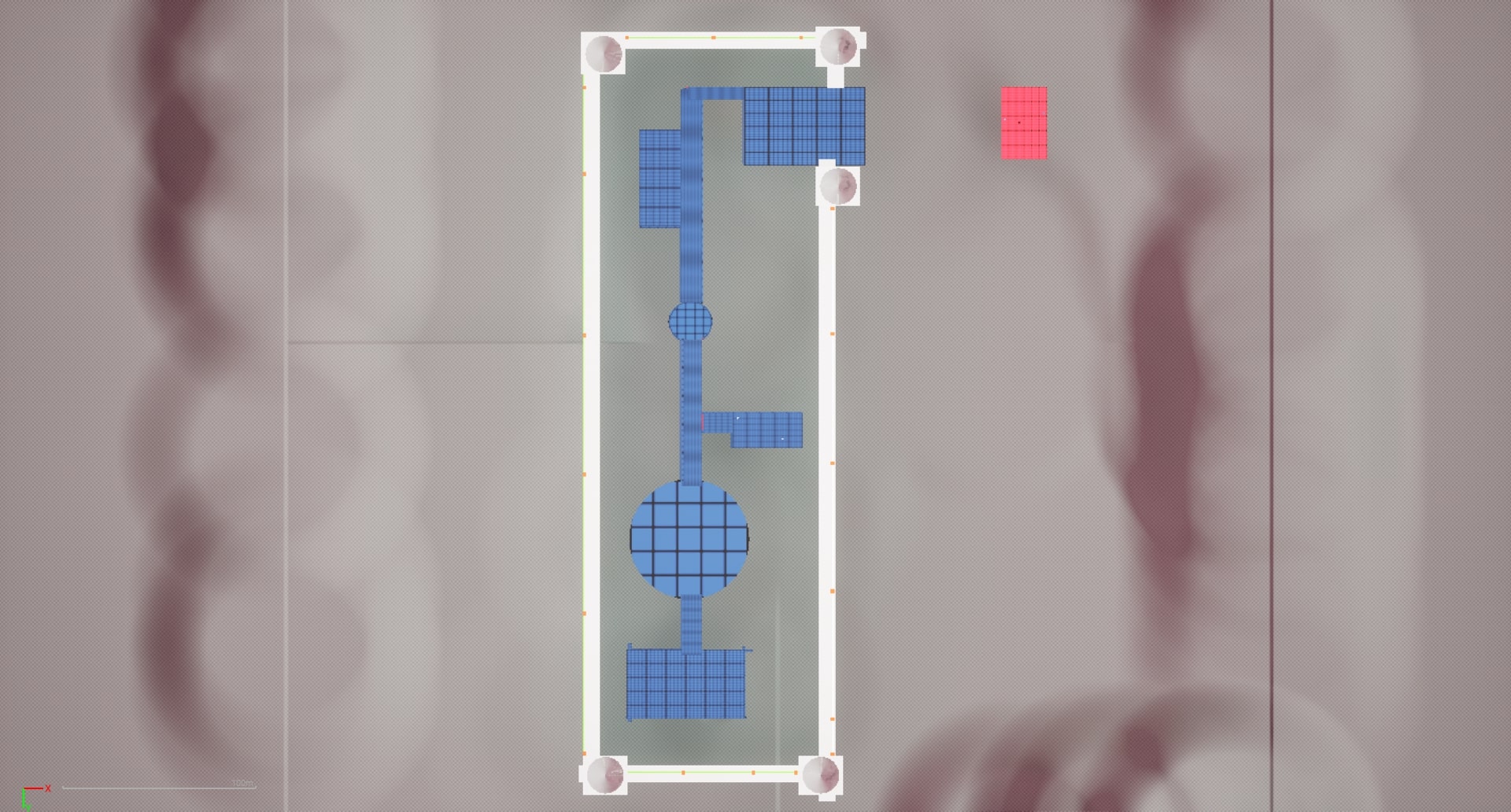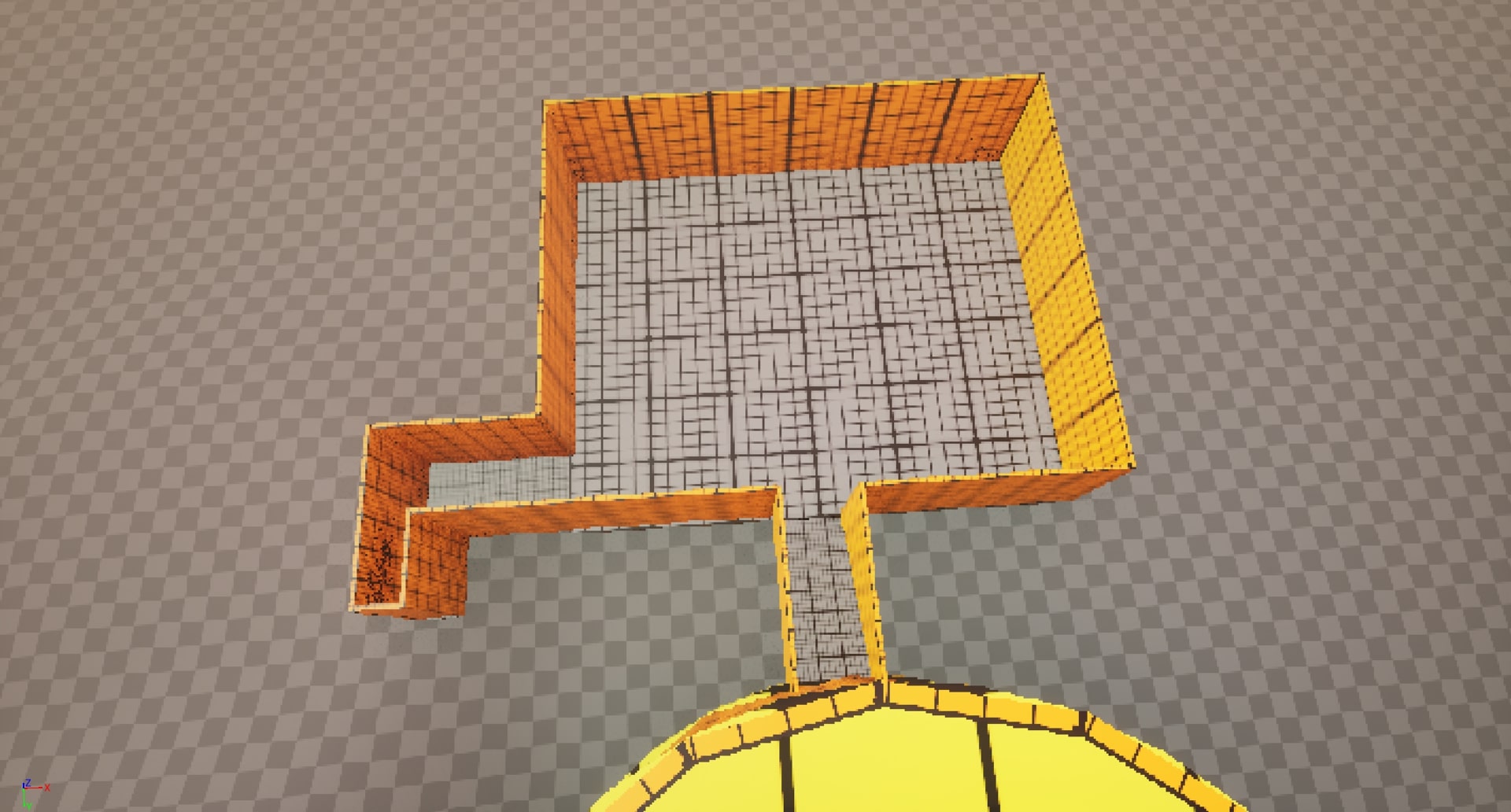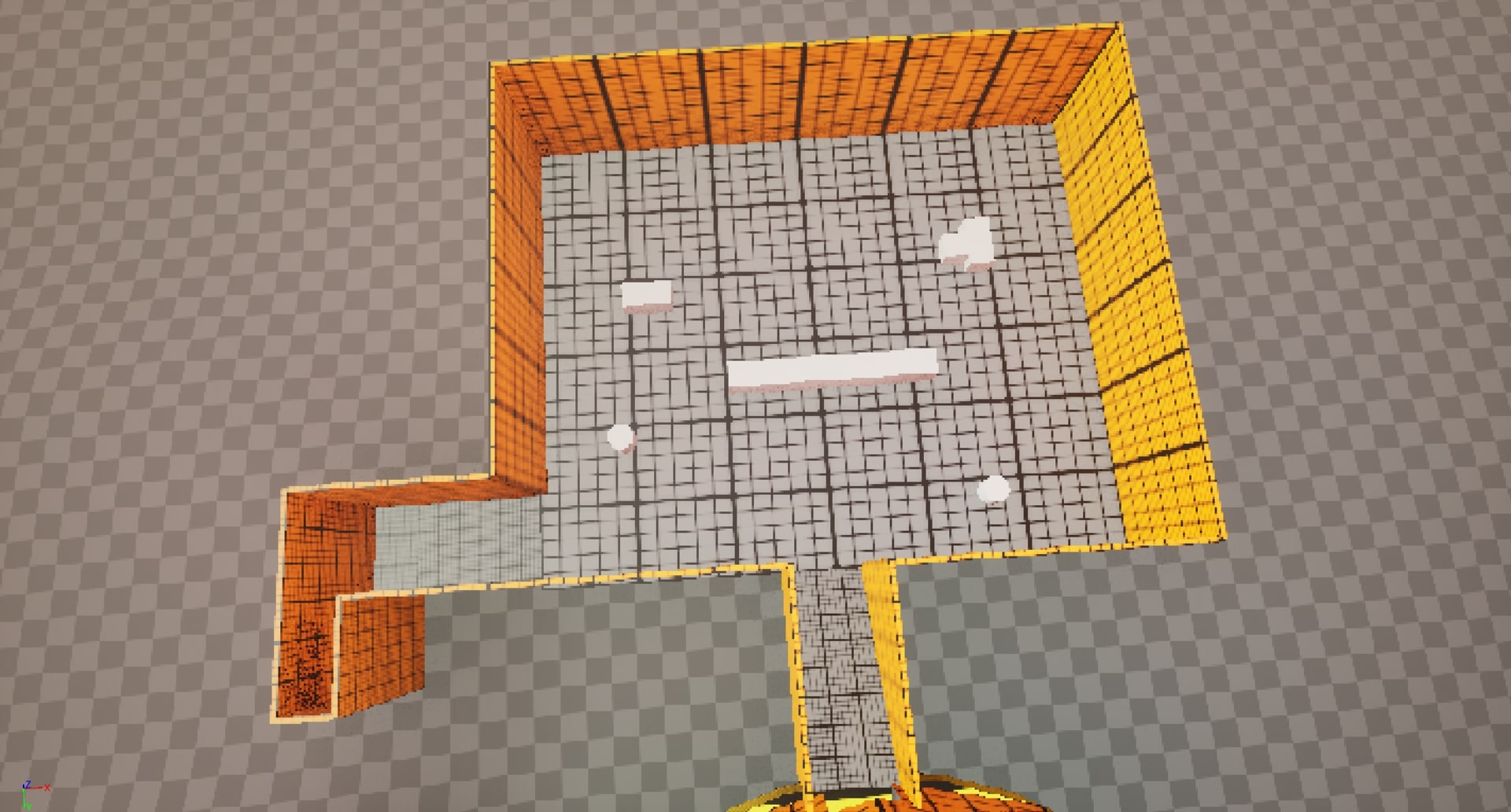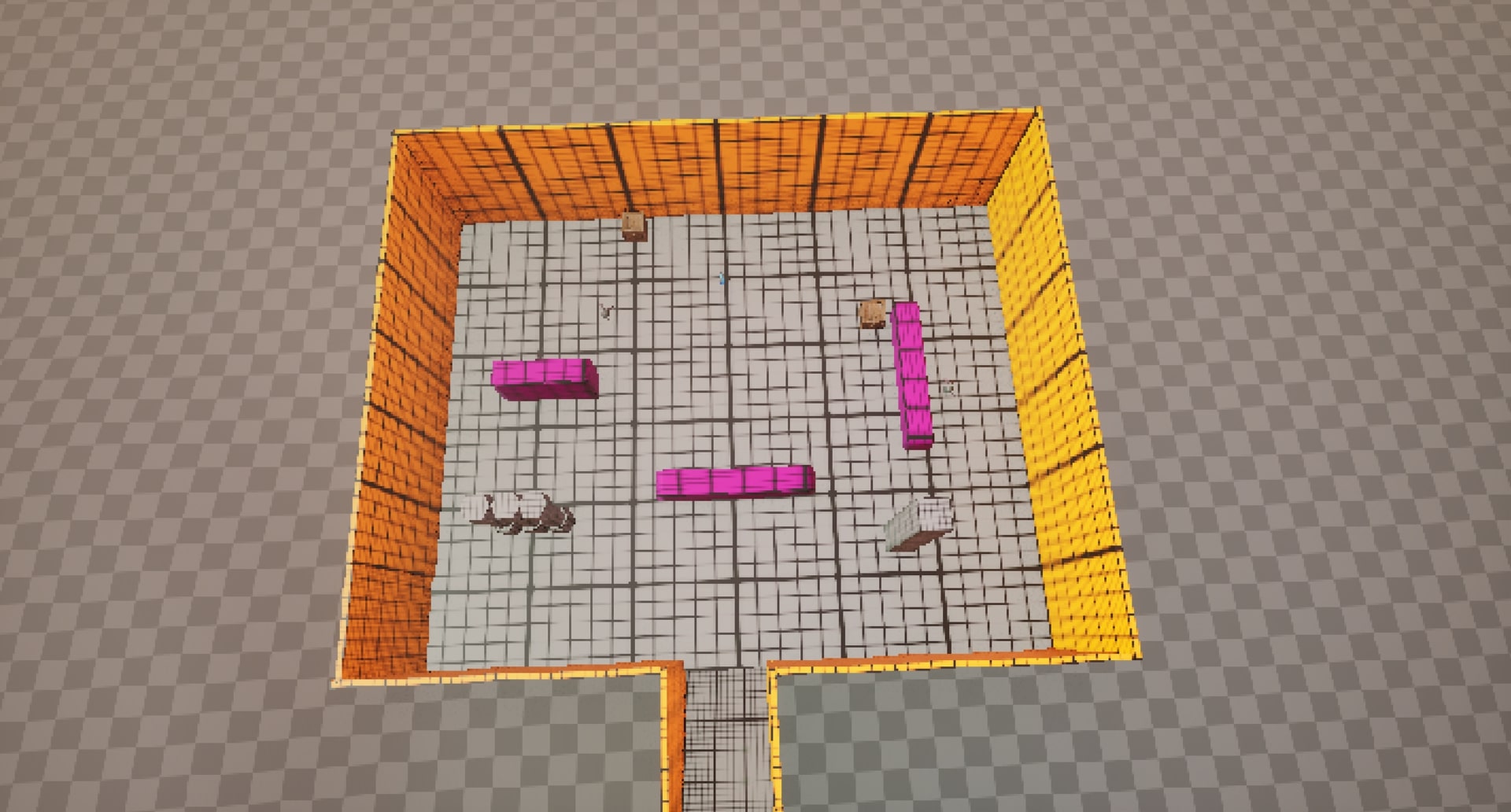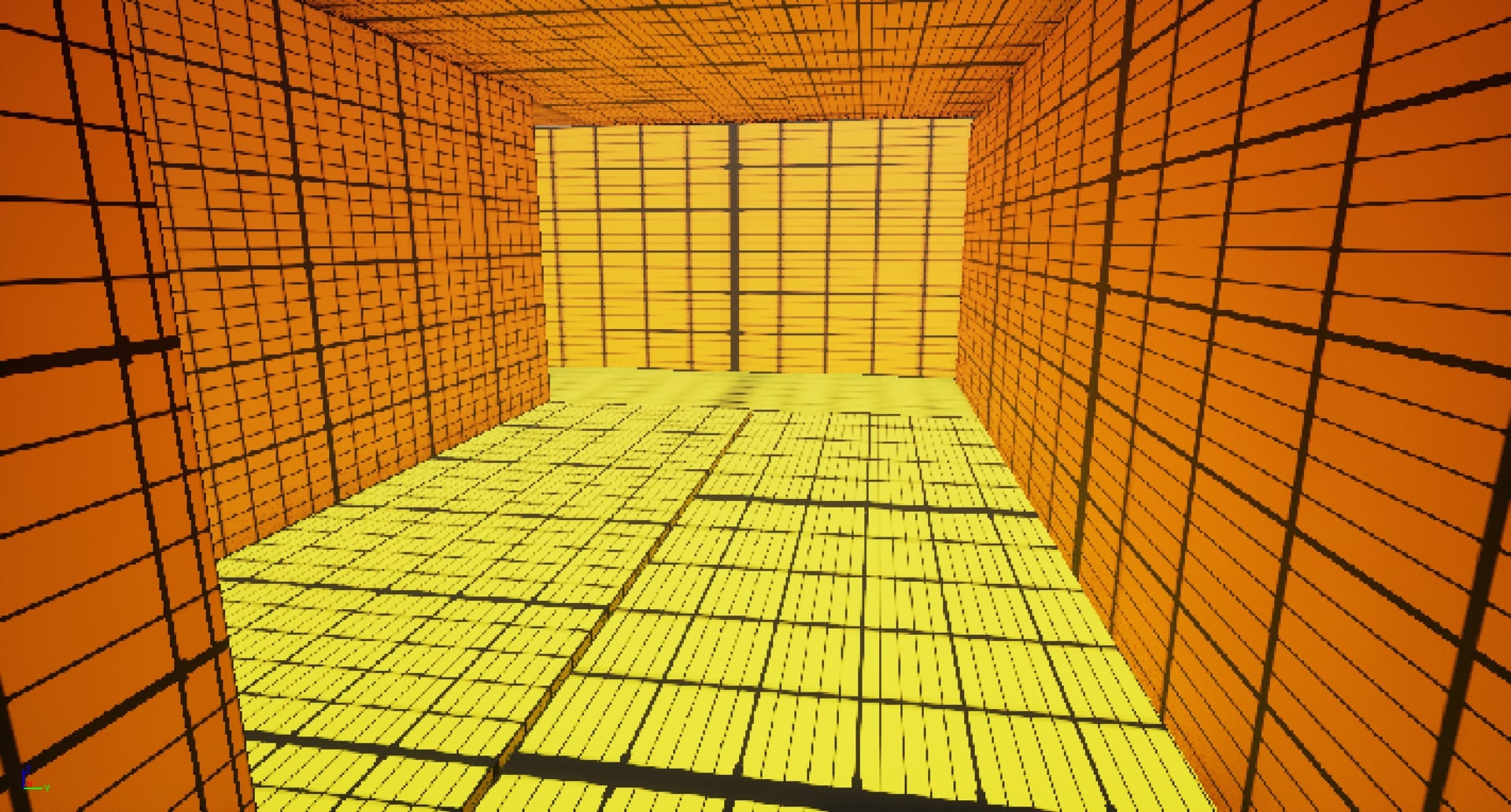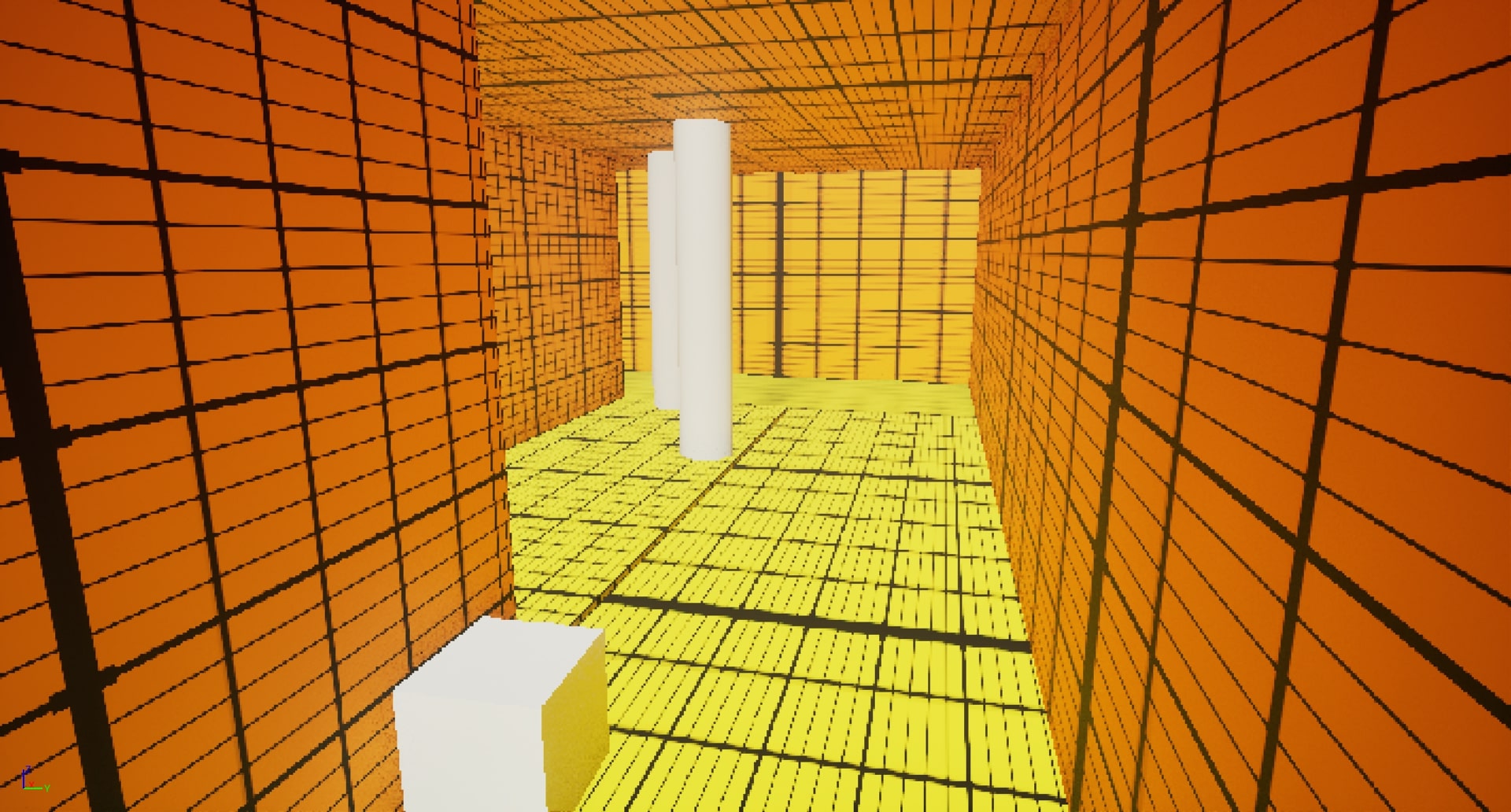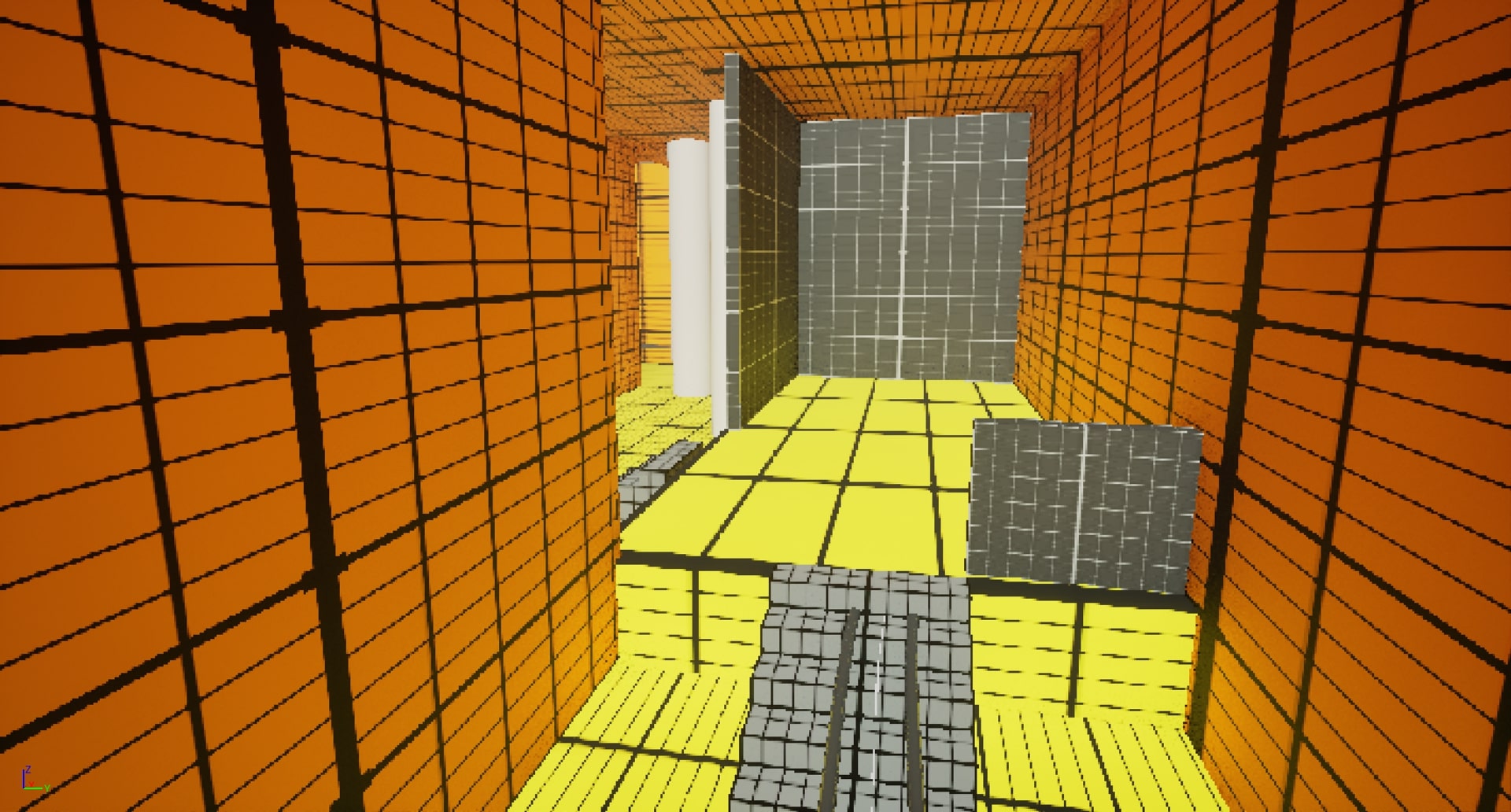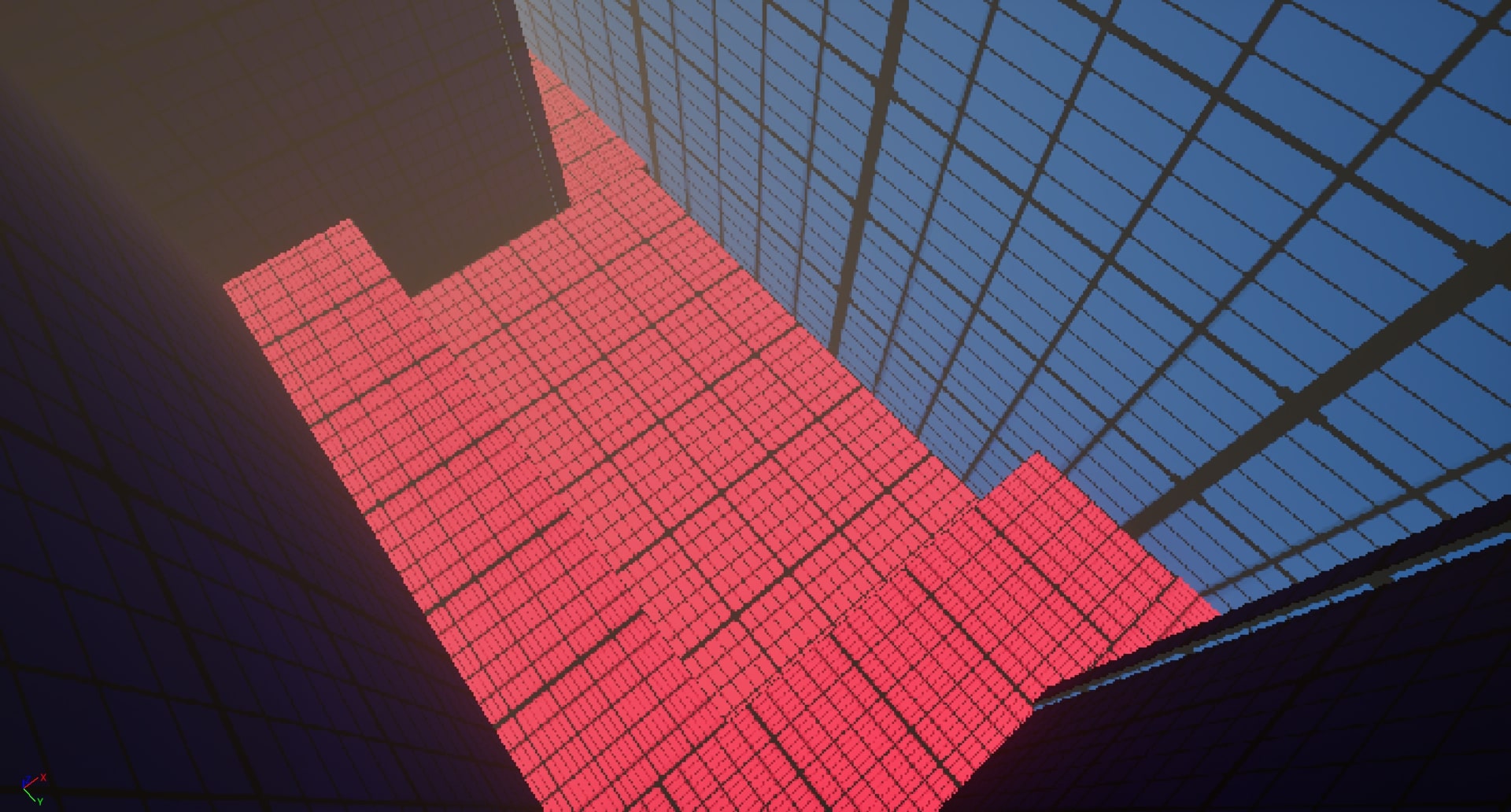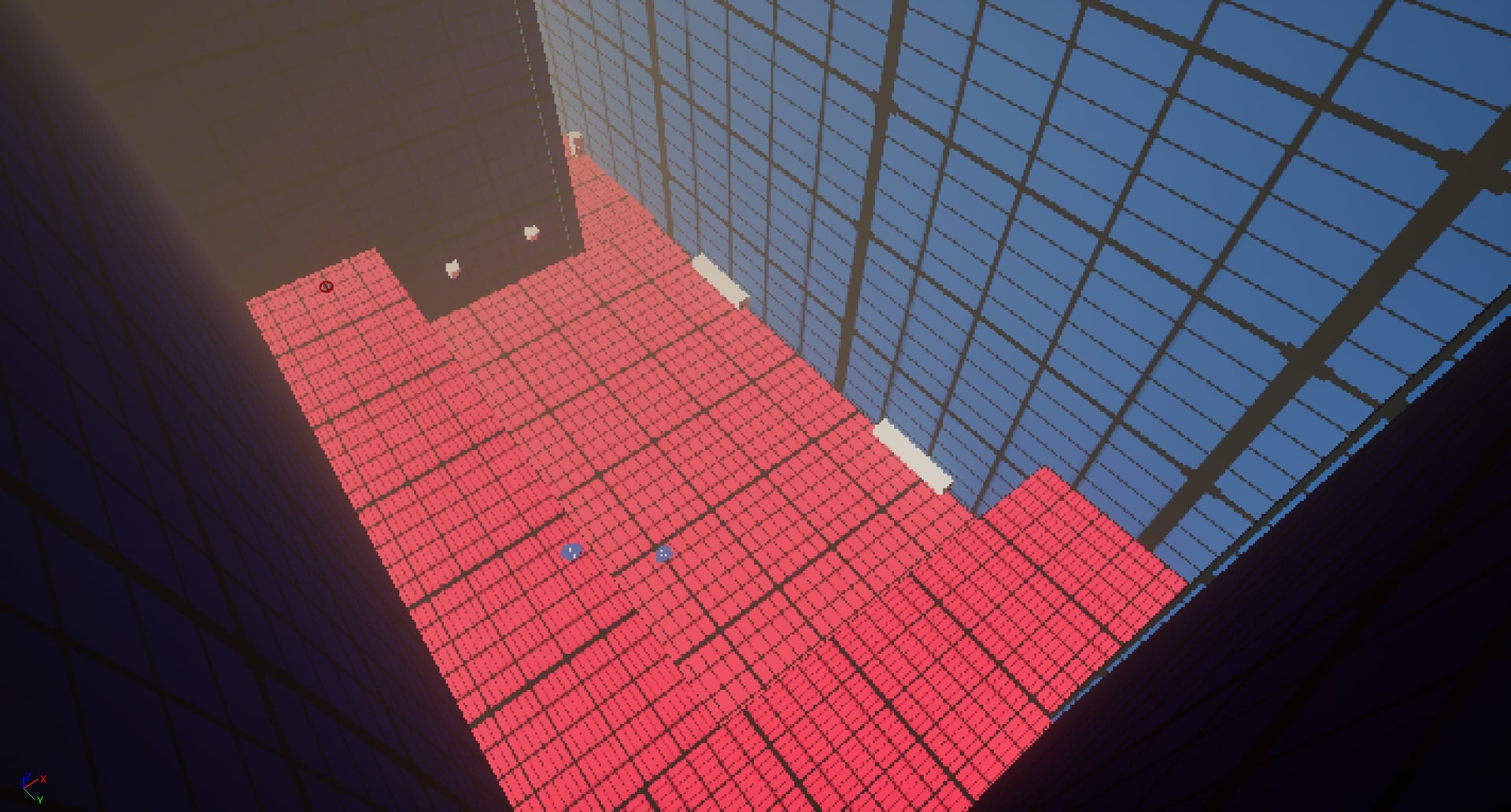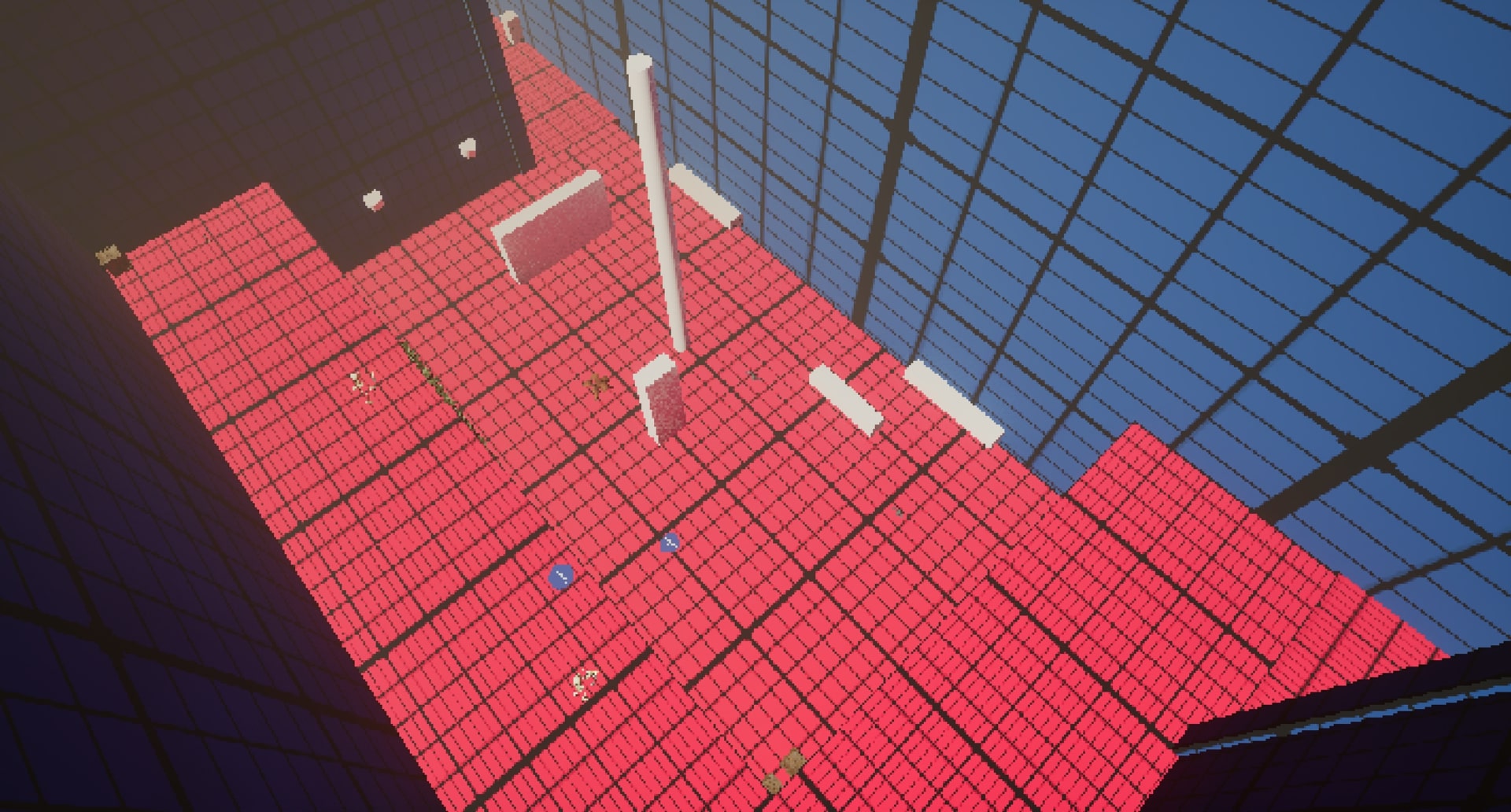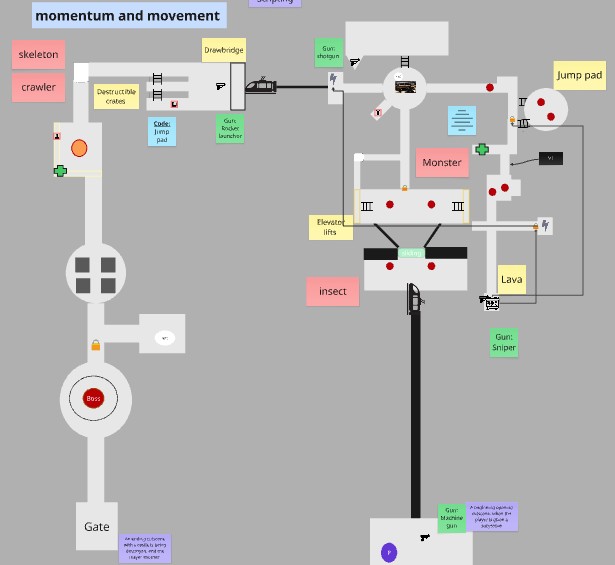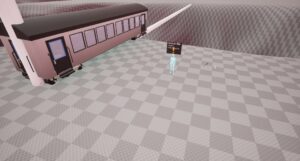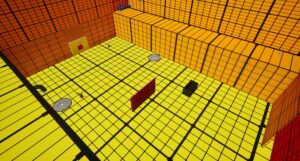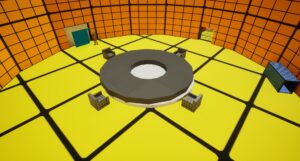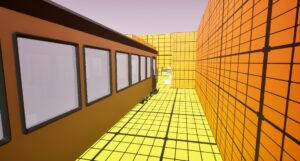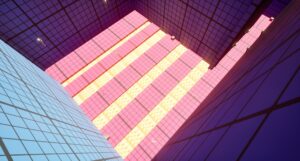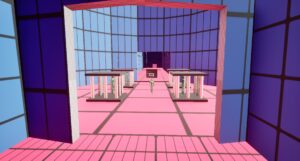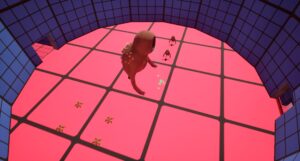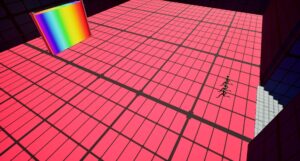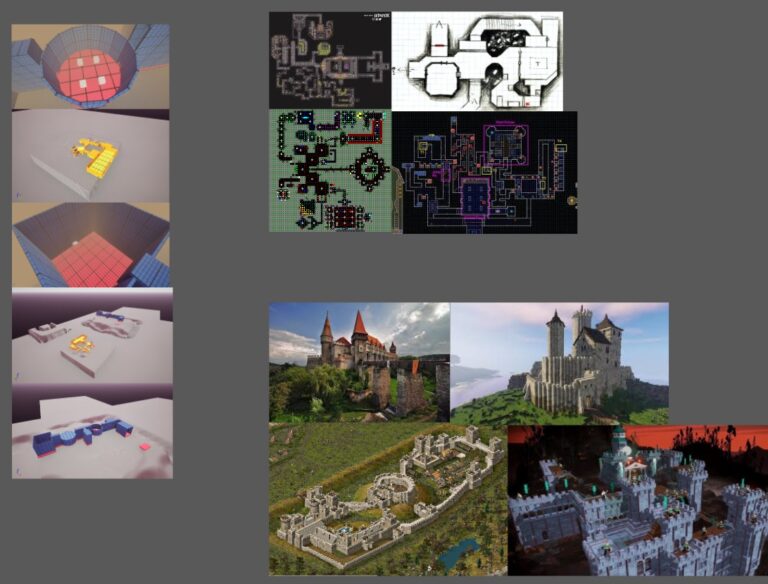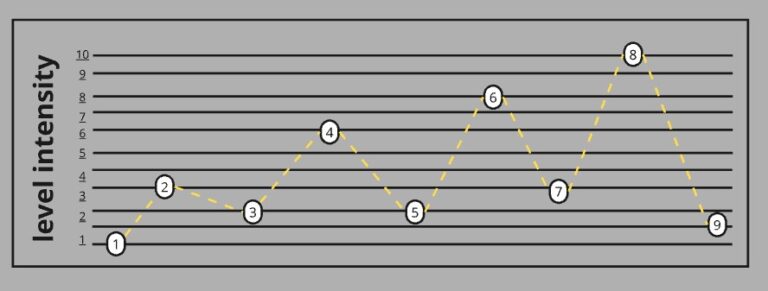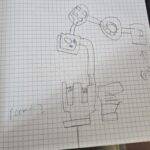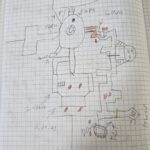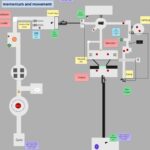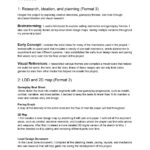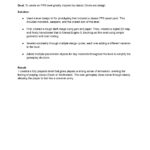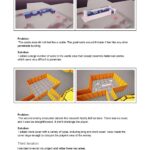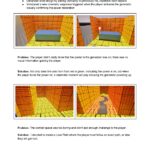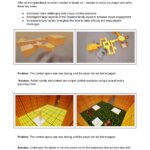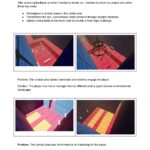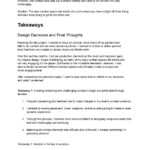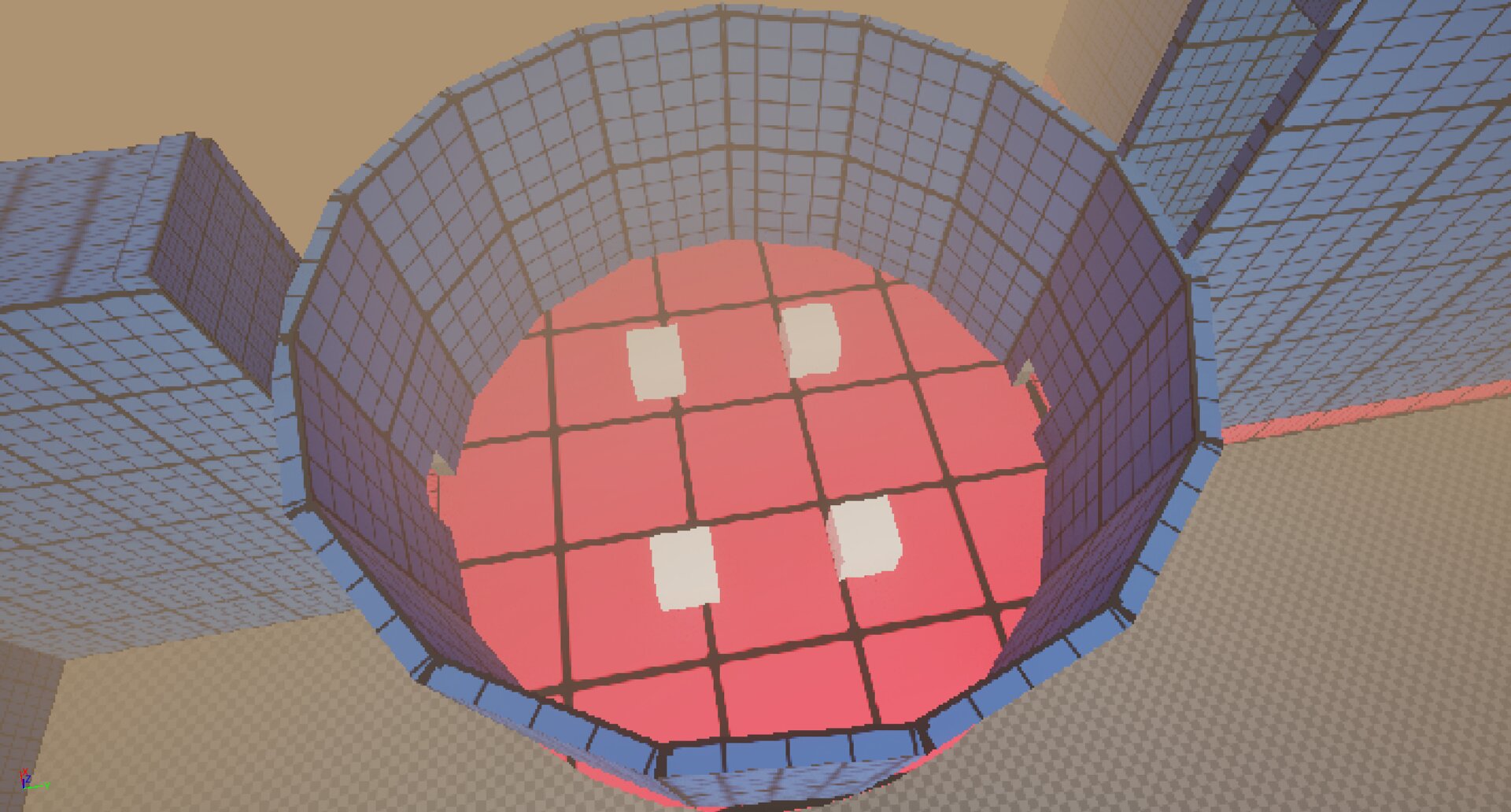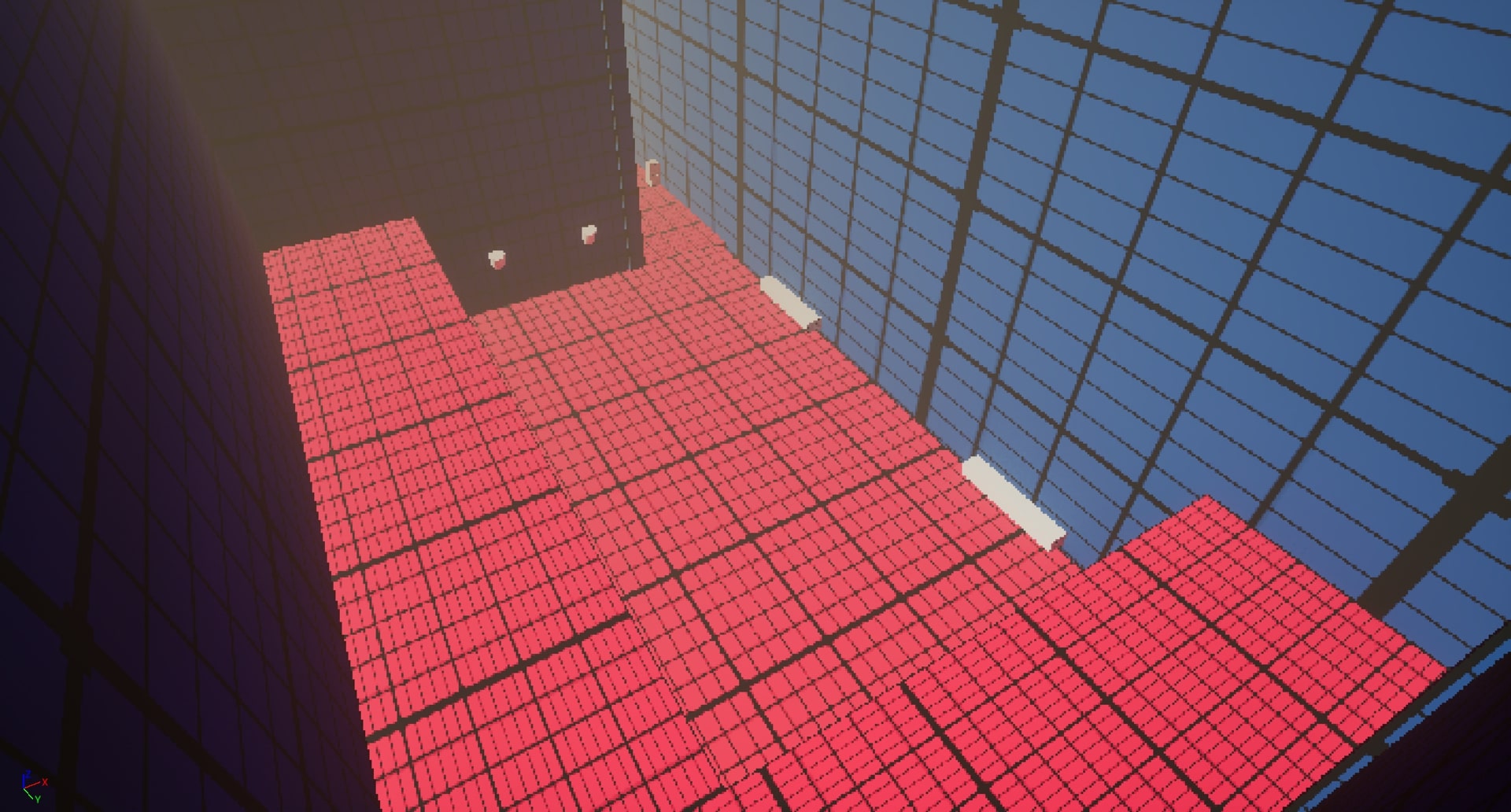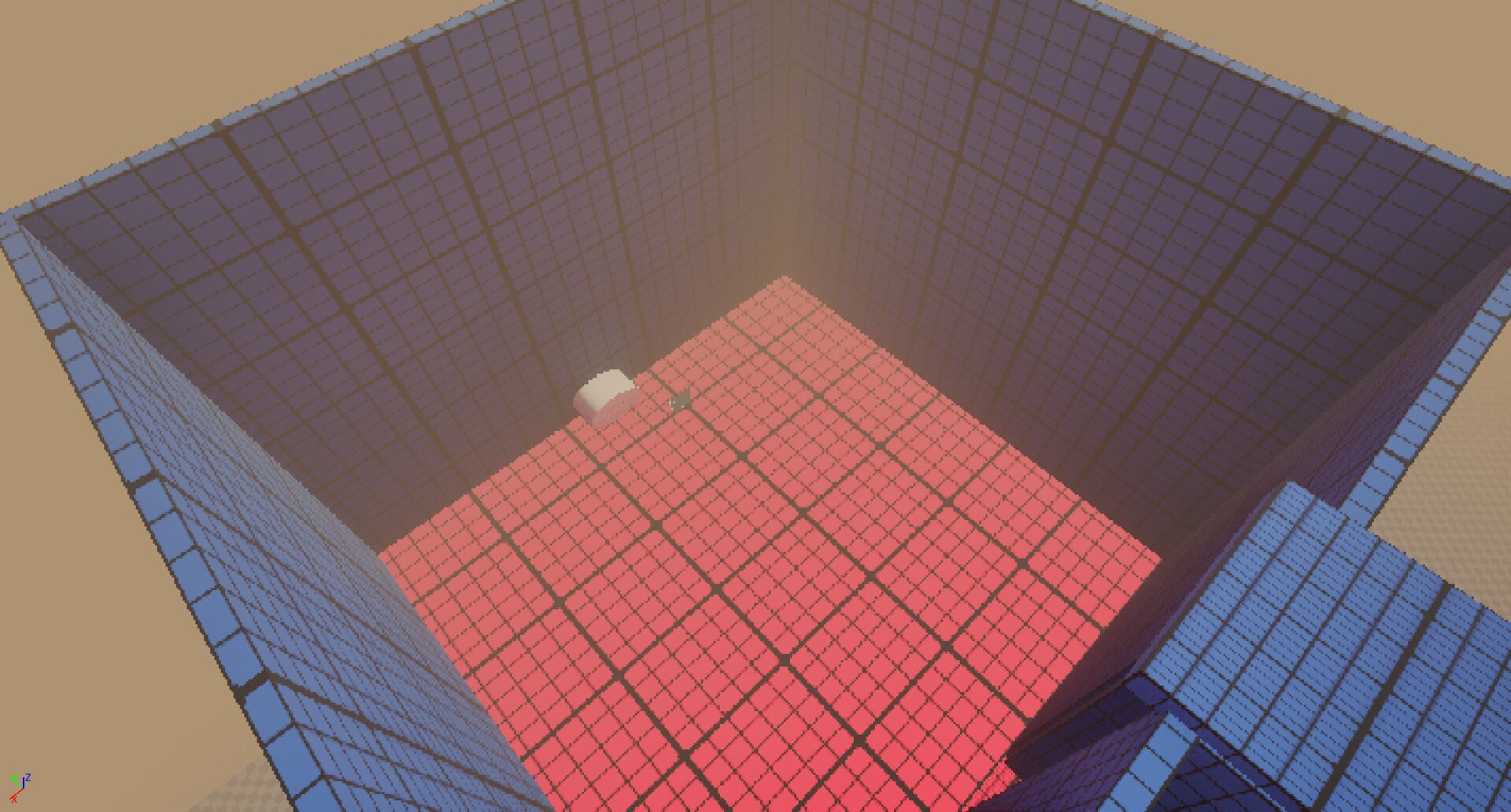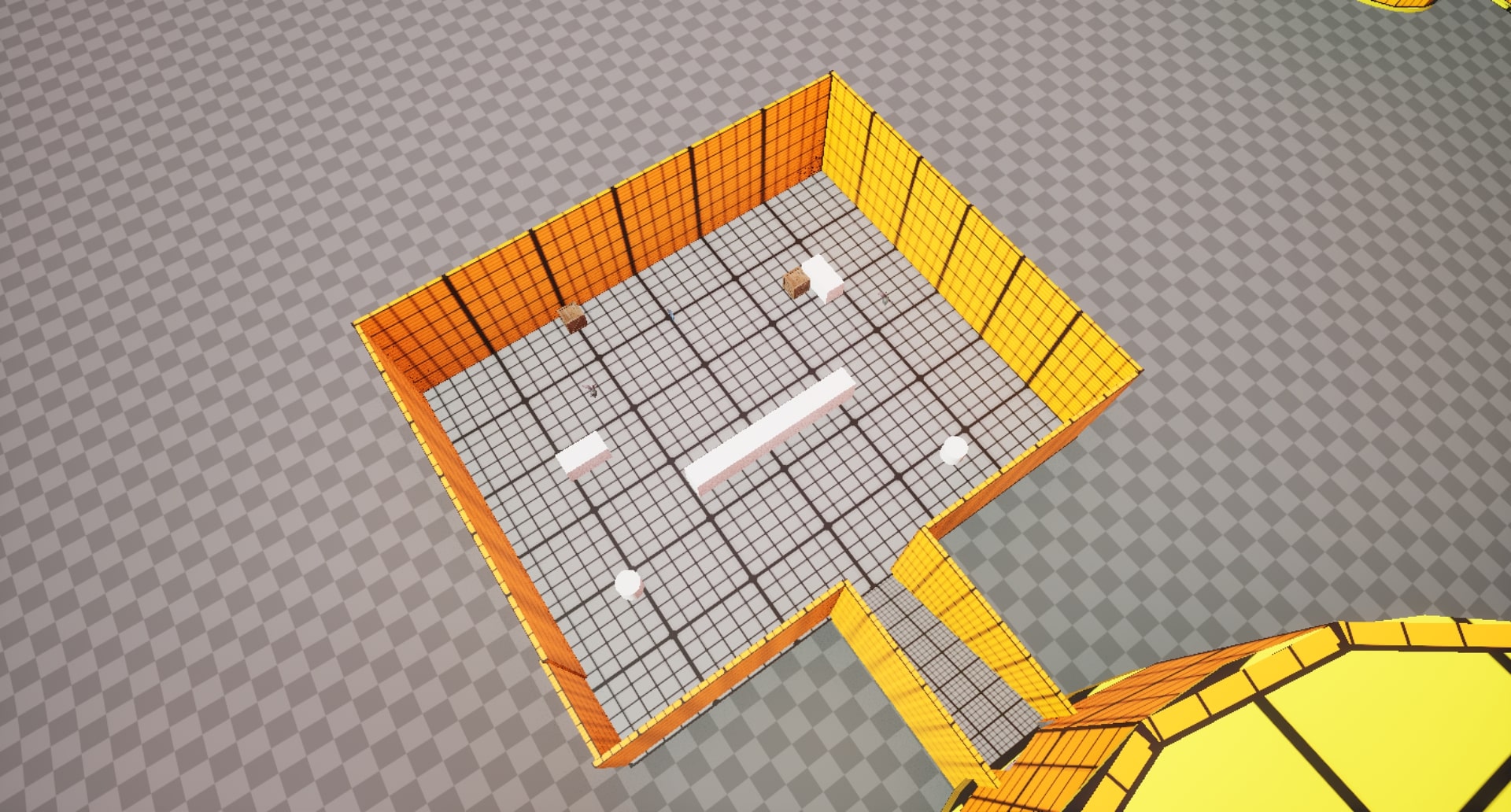Skip To...
Cult and Faith
- Genre: FPS shooter
- Type: Blockout
- Engine: Unreal Engine 5
-
Tools: UE Blueprints, Blockout Tools Plugin,
Level Design Kit,Miro - Iterations # 6
- Role: Level designer
Goal
Cult and Faith is an FPS project inspired by classics like Doom and Wolfenstein. My goal for this project was to make a game that not only felt similar to the greats mentioned above but also allowed me to put my unique spin on it as a level designer.
This project helped me improve my skills in designing combat spaces, as well as enemy placement, cover positioning, and encounter pacing. Additionally, I also improved my environmental storytelling and narrative structuring to enhance the level design. This helped me create a more immersive world that combines action gameplay with meaningful world-building.
Level Overview
Highlights of the level
Techniques
Affordance
I use visual consistency so that the player can read the information in a fast-paced combat environment.
- Affordance—Color-coded interactions and objects ensure quick recognition, even in fast-paced combat.
- Visual Language—Color Locks use distinct color variations to clearly indicate locked vs. unlocked states.
- Balance immersion – The game world follows consistent visual rules, allowing players to intuitively understand how it works.
Gates & Valves
I would stop the player from moving too fast through the level, as they would sometimes skip the main objective.
- Lock and Key: Players must find a key to unlock access to the next area, preventing full exploration from the start.
- Backtracking: After completing an objective, players must return to a previous location to continue progressing.
- One-Way Entrance: Players fall into an area they can’t return from, forcing them down an alternate path where they encounter enemies.
Walkthrough
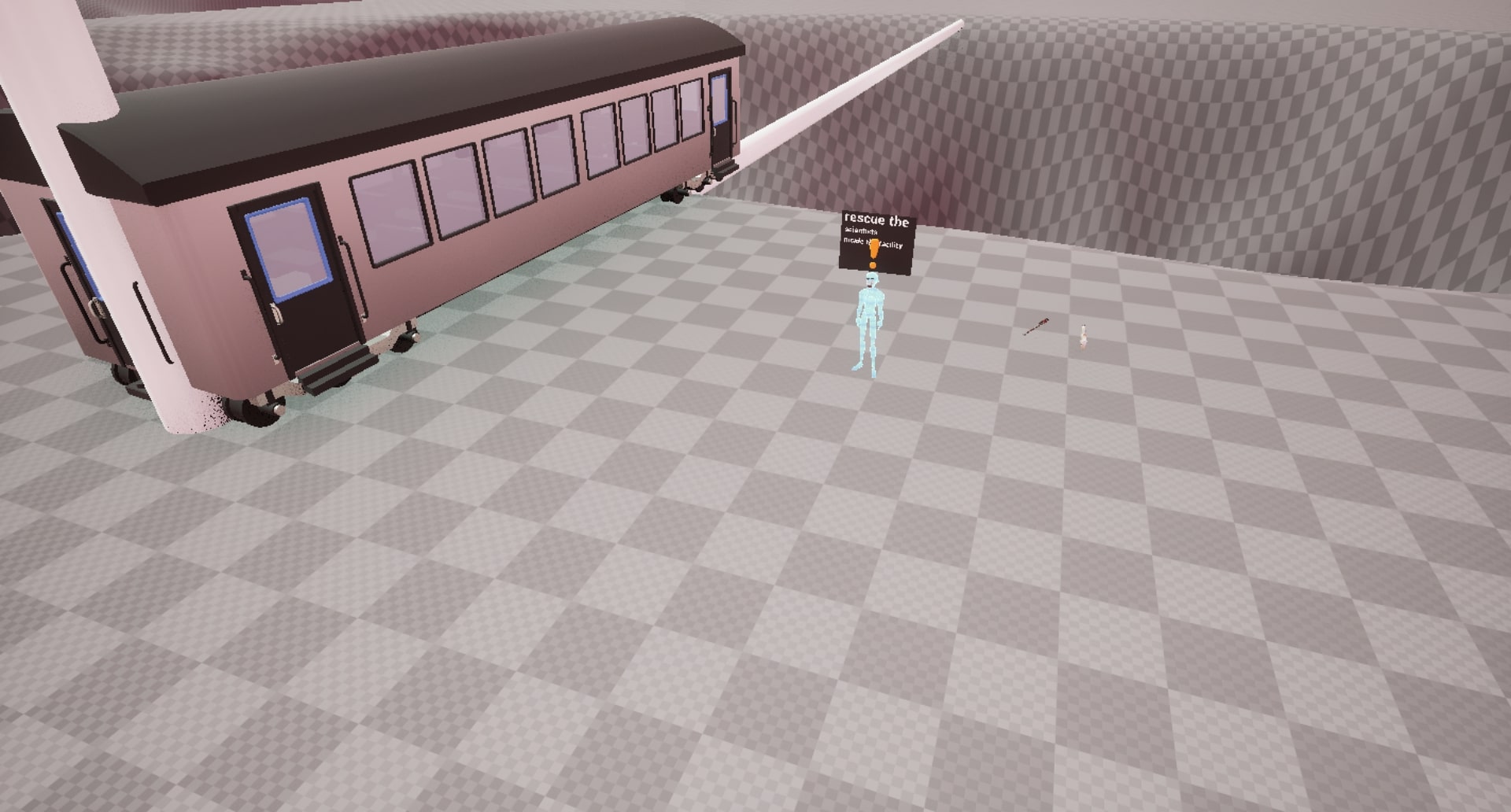
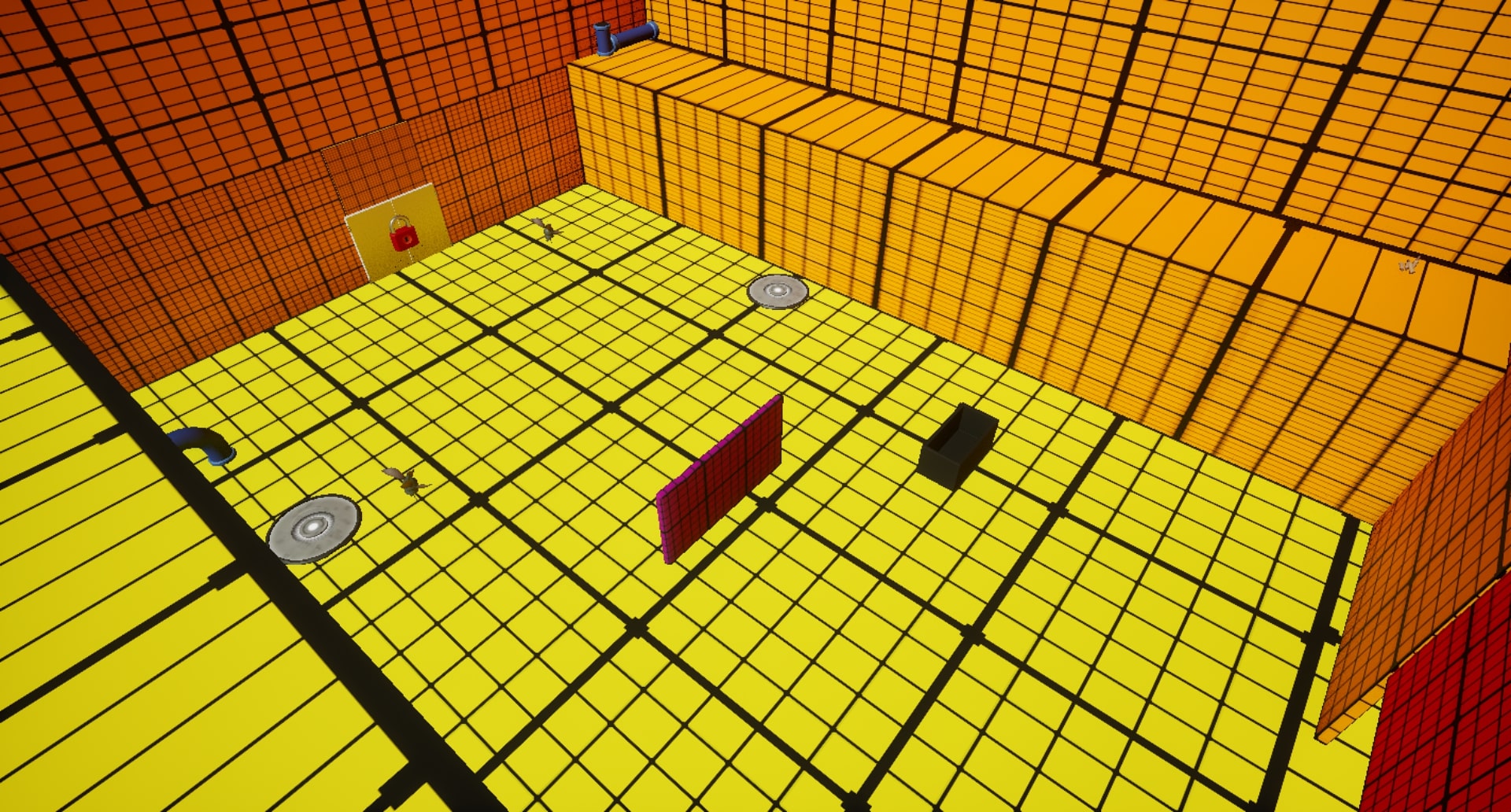
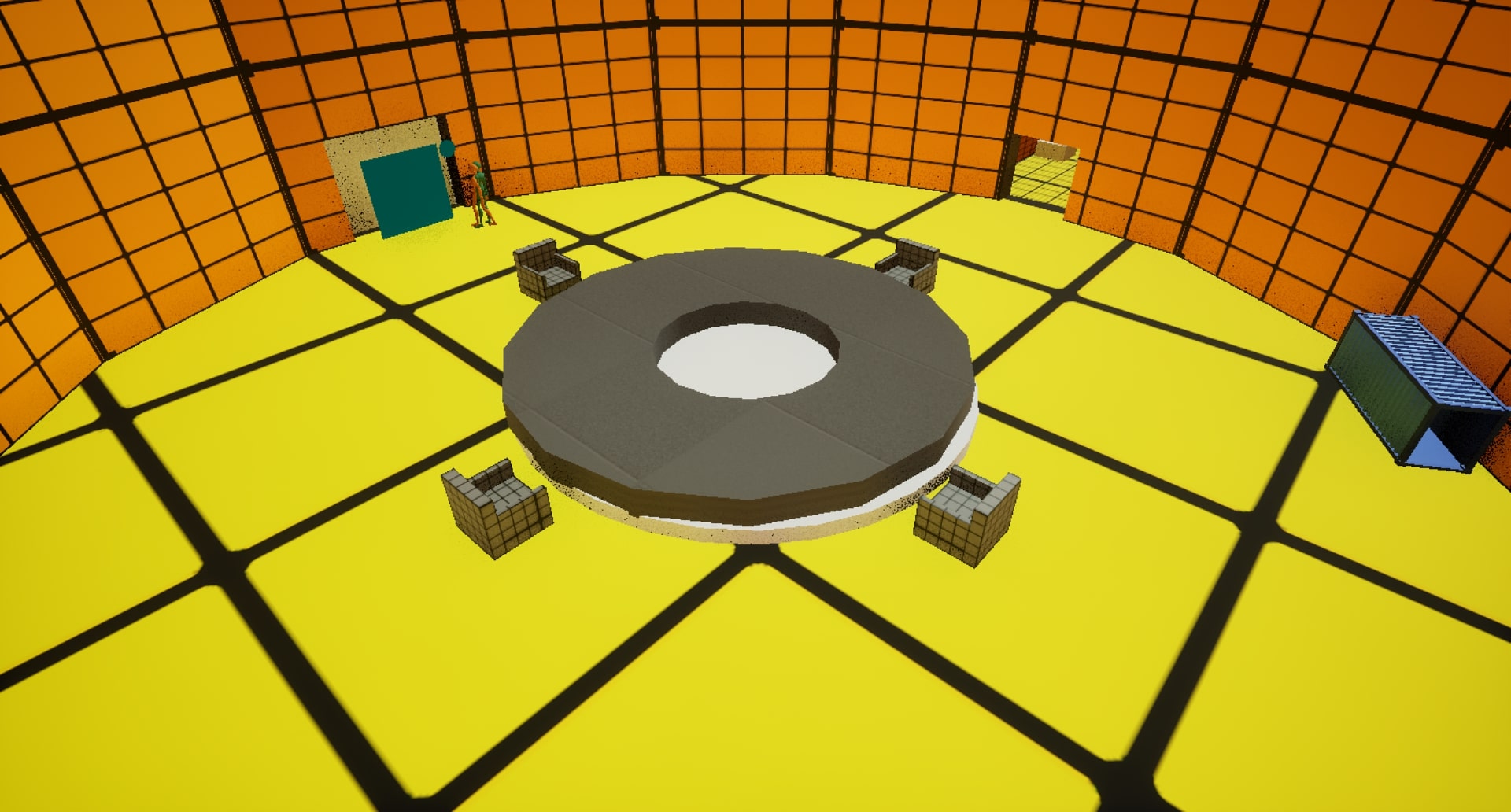
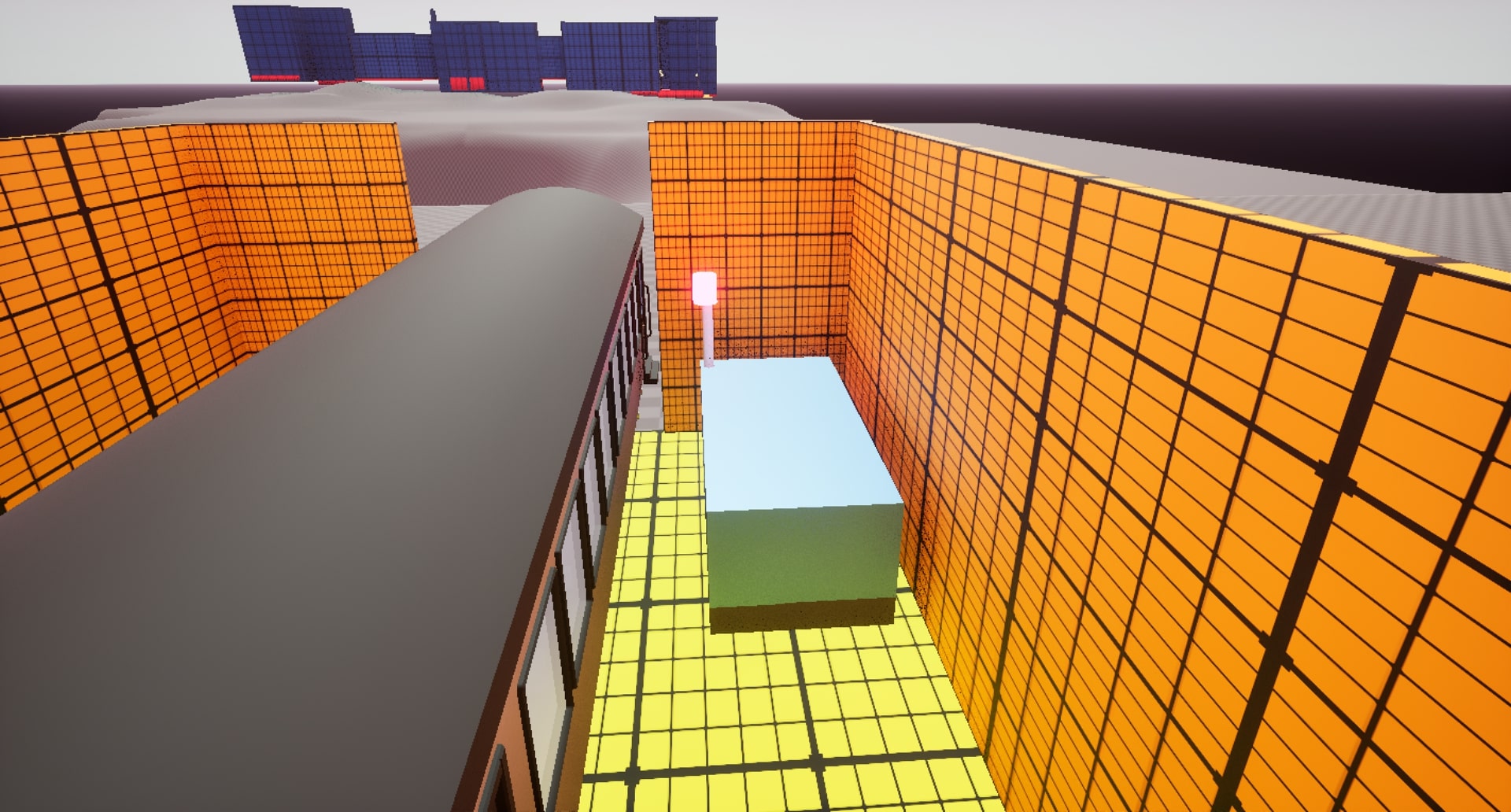
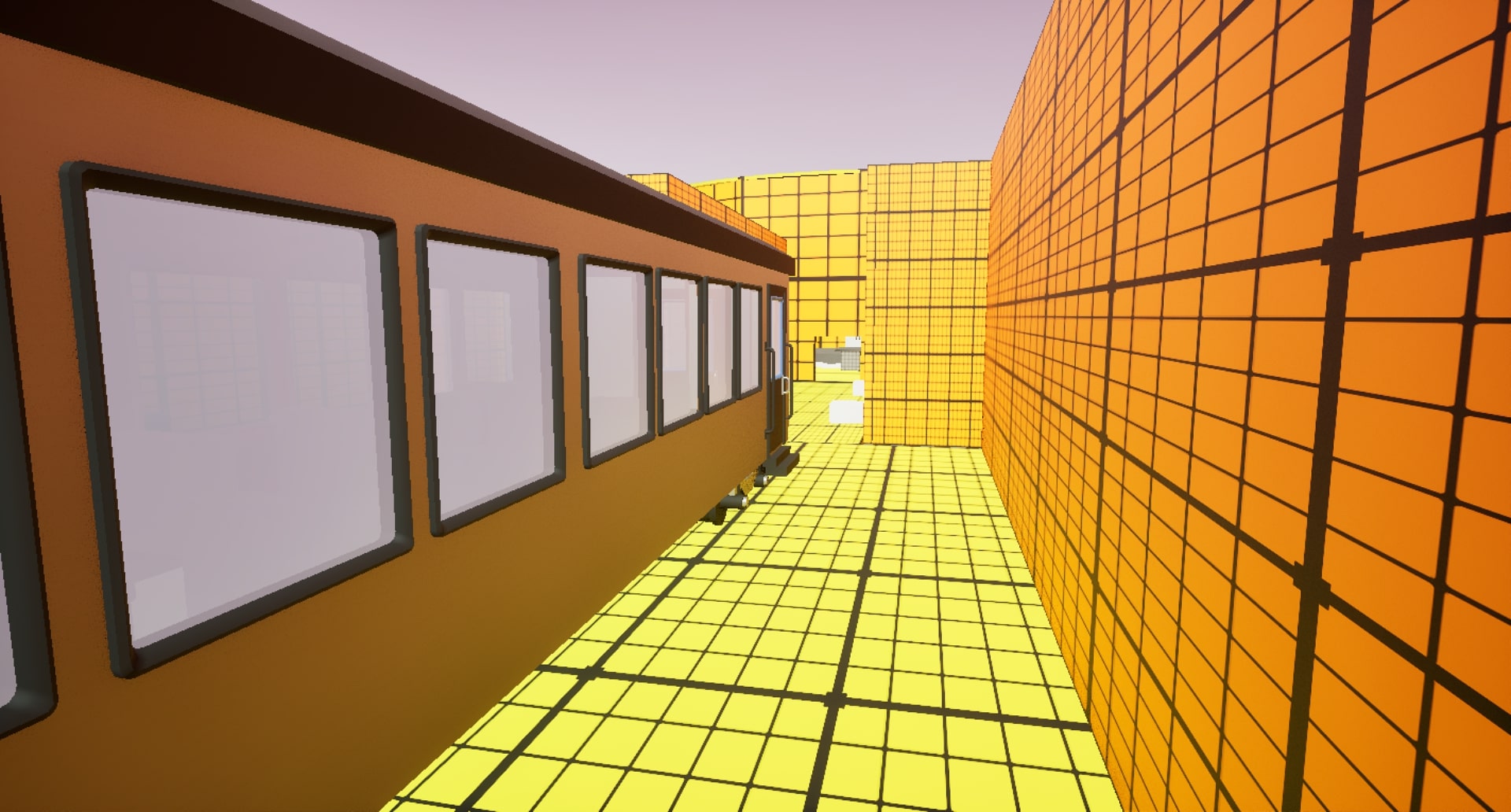
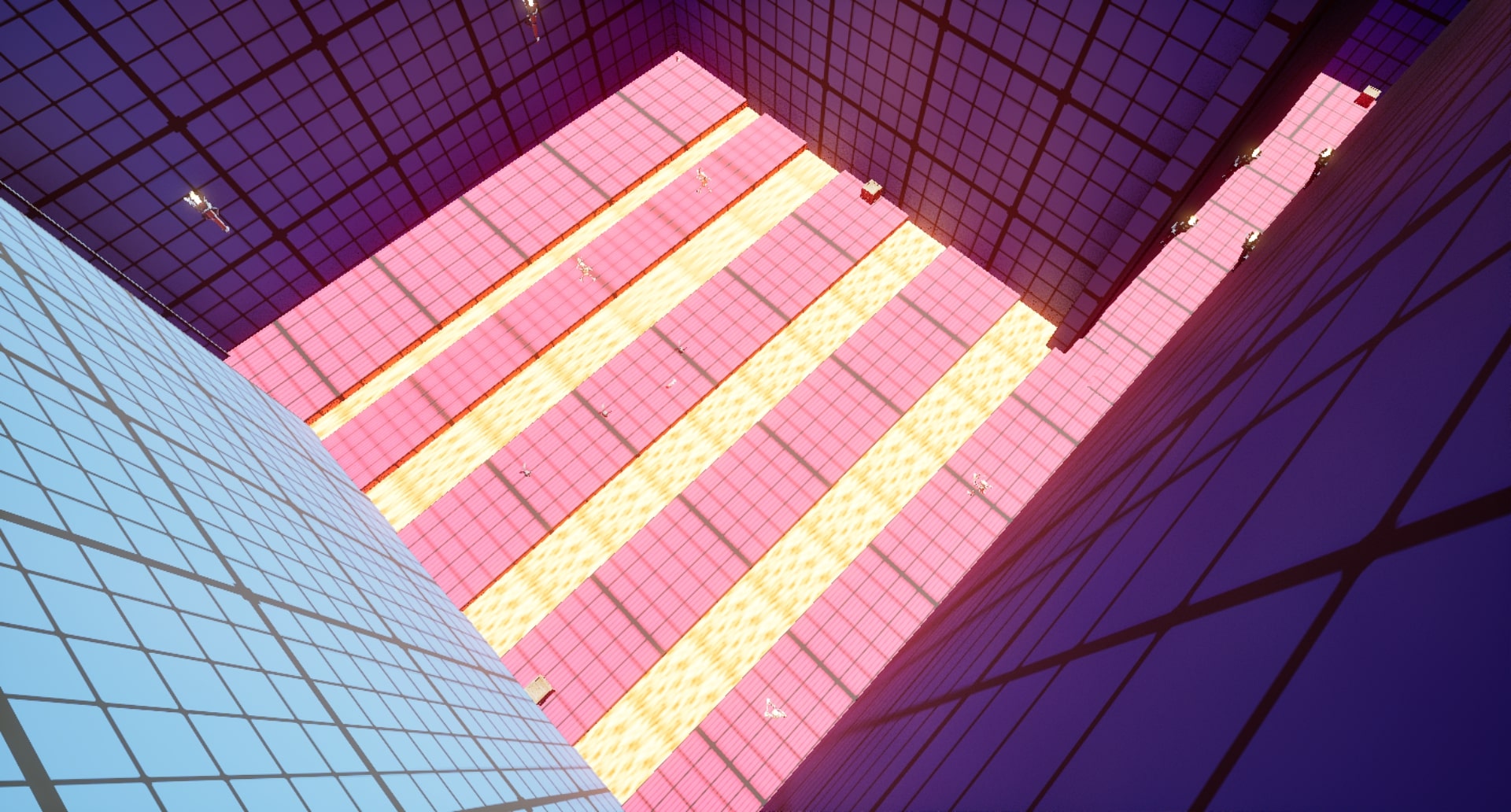
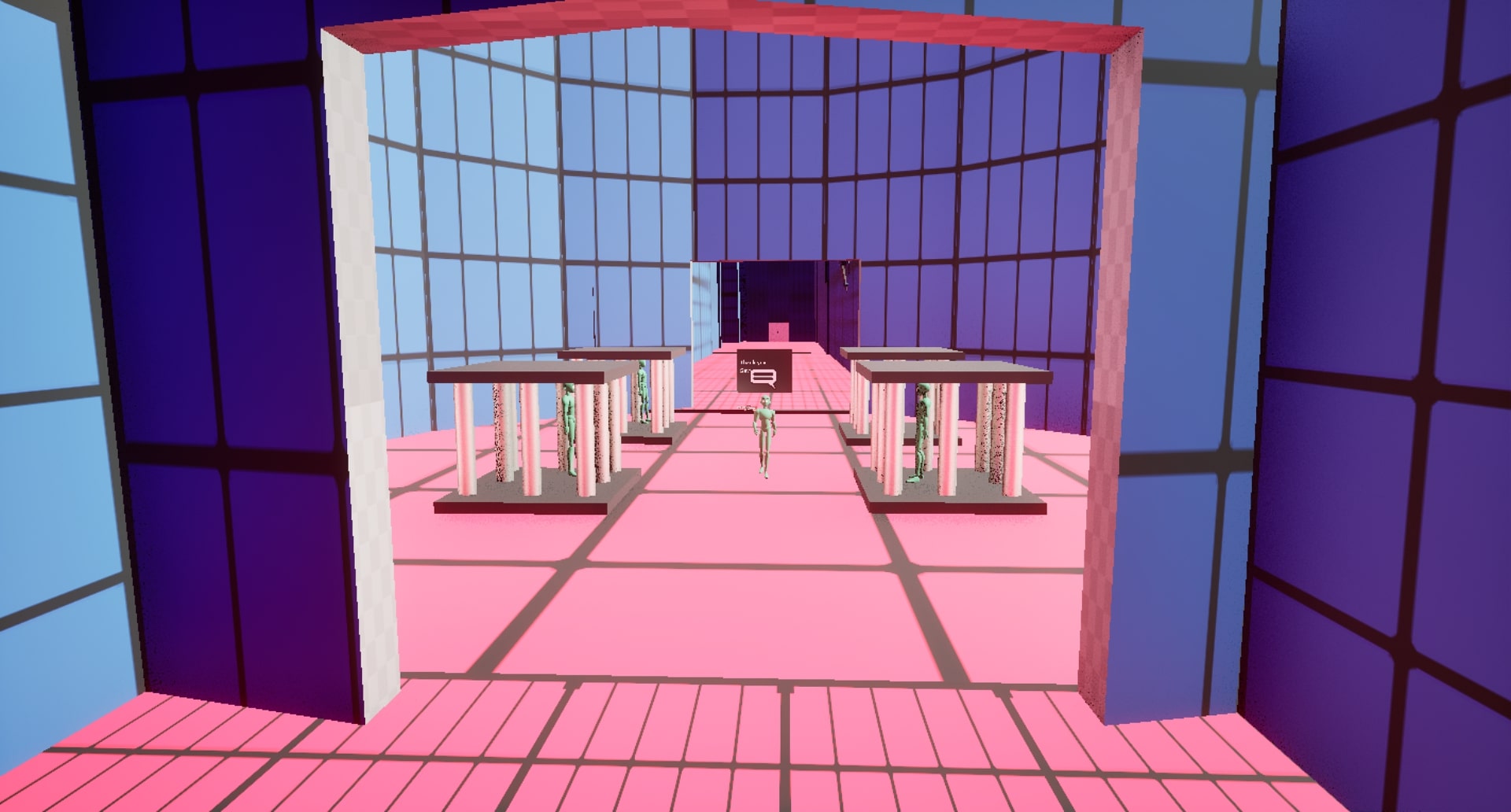
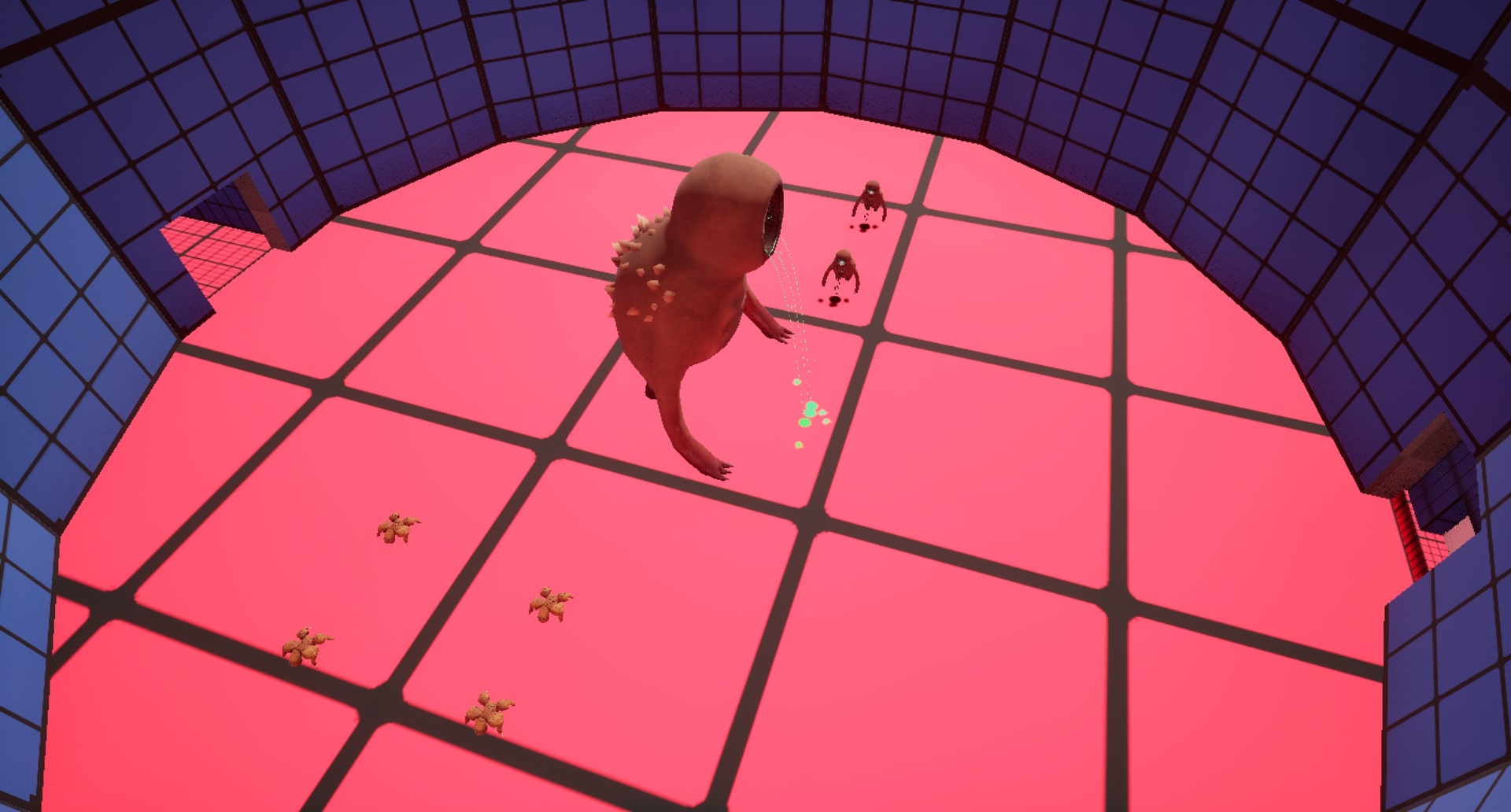
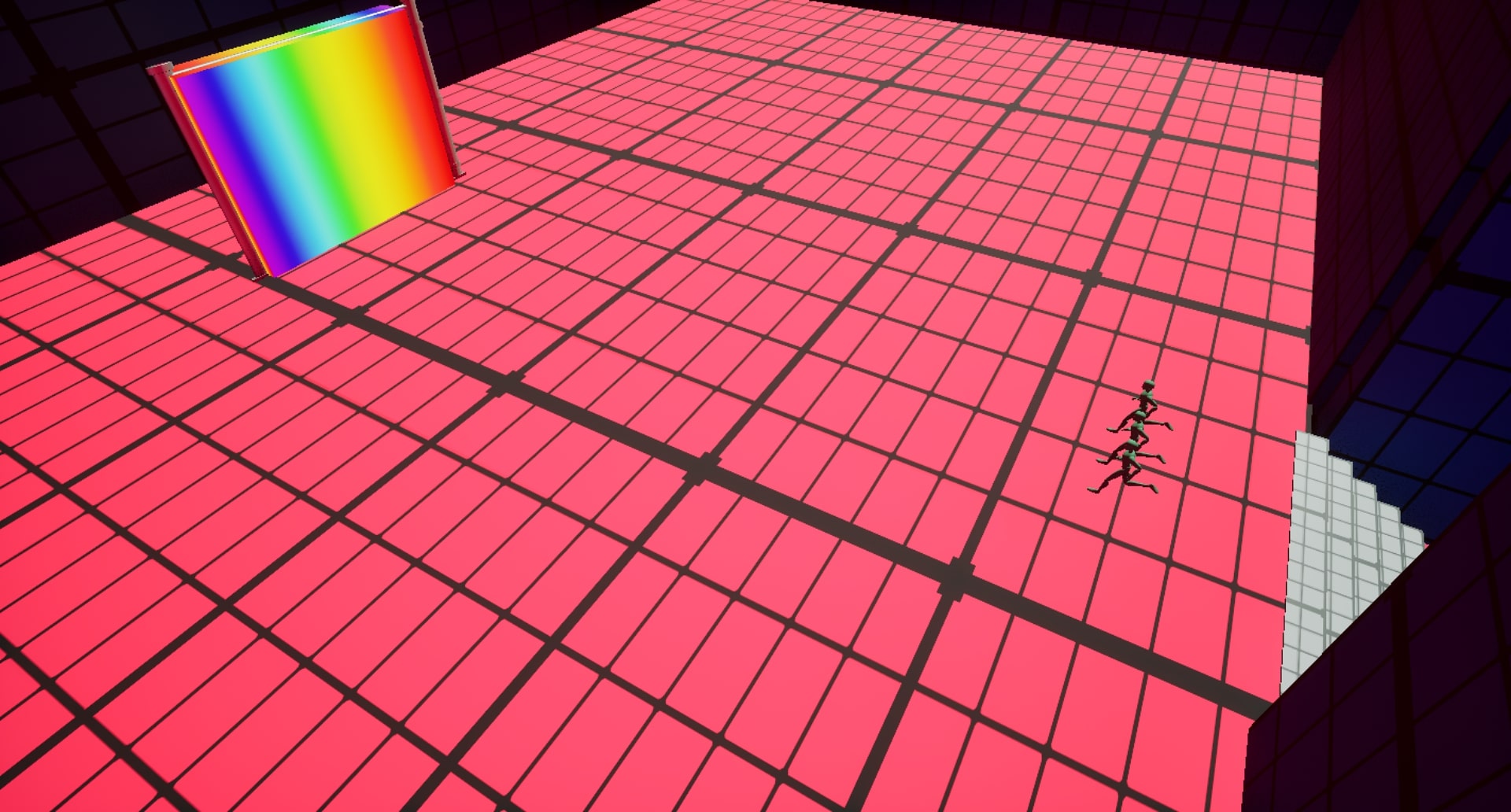
Beat 1: Hell
Once in Hell, you go to the transportation hub and make your way to the research facility.
Beat 2: Research Facility
You arrive at the research facility. There are enemies in front of it and a locked door
Beat 3: Scientist
While clearing out the enemies in the research facility, you find an NPC and talk to him. He tells you that the other members of the facility are in the castle and that demons have taken them.
Beat 4: Generator
After you kill all the enemies and reach the transit station, you discover there’s no power. You find a key and must go downstairs in the research facility to turn it back on
Beat 5: Transportation
Once the power is on, you return to the transit station and travel to the castle.
Beat 6: Castle
You make your way through the castle and fight off enemies.
Beat 7: Rescue
You find the missing researchers. They tell you that the gate to the exit is located outside the castle.
Beat 8: Boss
You fight a mini-boss while trying to escape the castle.
Beat 9: Escape
You escape the castle through a portal that leads back to Earth.
he detective and scientist agree to join forces.
Top down view of the beats
Walkthrough Guide
Process
1: Research, ideation and planning
I began the project by exploring creative directions, gameplay themes, and tone through structured ideation and visual research.
- Early Concept: I created the initial ideas for many of the mechanics used in the project. I worked with an asset pack that included a variety of pre-built mechanics, which allowed me to experiment and test different systems. I also established the early level design beats and pacing that would carry over into the final version of the project.
- Visual References: I researched various themes and compiled a mood board that helped me build the world, the tone, and the story. Many of these images are not only from video games but also from other media that helped me create this project.
2. LDD and 2D map
- Pacing Graph
A map of the intensity of the entire level and the flow of how the player will feel throughout.
- 2D Map
I first created a level design map by sketching it with pen and paper. I outlined all the important areas, such as combat, narrative moments, and locations where the player can find extra ammo and weapons. After that, I created a more detailed 2D digital version of the sketch in Miro. I further iterated on it by adding and removing different parts over time.T
- Level Design Document
In this Level Zone document, I compiled all the planning, beats, pacing, layouts, and mechanics into one resource that will help guide me during the development of this project.
3: The First Roughout
Goal: To create an FPS level greatly inspired by classic Doom-era design..
Solution:
Used a level design kit for prototyping that included a classic FPS asset pack. This included monsters, weapons, and the overall look of the level
First, created a rough draft image using pen and paper. Then, created a digital 2D map, and finally transitioned that to Unreal Engine 5, blocking out the level using simple geometry and color coding
Iterated constantly through multiple design cycles, each one adding a different variation to the level
Added multiple placeholder objects for key moments throughout the level to simplify the gameplay structure.
Result:
I created a fully playable level that gives players a strong sense of immersion, evoking the feeling of playing classic Doom or Wolfenstein. The core gameplay ideas came through clearly, allowing the player to feel like a one-man army.
4: Iterating on the Roughout
Second Iteration
I decided to revisit my project and refine these key areas.
- Researched additional castle references and updated the layout accordingly
- Introduced simplified object geometry inspired by castle-like environments
- Increased player resources (ammo and gundrops) to improve combat balance
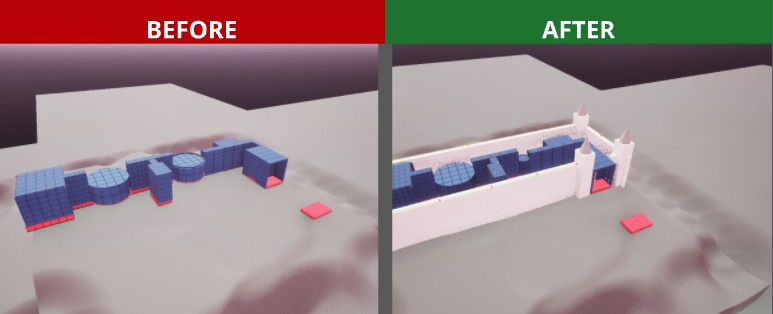 Problem:
Problem:
The castle area did not feel like a castle. The giant walls around it made it feel like any other penetrable building.
Solution:
I added a large number of walls to the castle area that closely resemble historical castles, which were very difficult to penetrate.
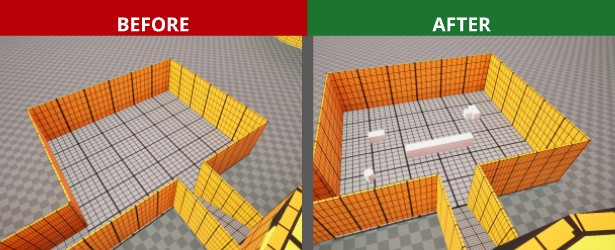
Problem:
The second enemy encounter outside the research facility felt too bare. There was no cover, and it was too straightforward. It didn’t challenge the player.
Solution:
I added more cover with a variety of types, including long and short cover. I also made the cover large enough to obscure the player’s view of the enemy.
Third iteration
I decided to revisit my project and refine these key areas.
- Implemented a power queue system to indicate generator status (on/off) to the player
- Enhanced level design by adding verticality to previously flat, repetitive room layouts
- Introduced a new cinematic sequence triggered when the player activates the generator, visually confirming the power restoration
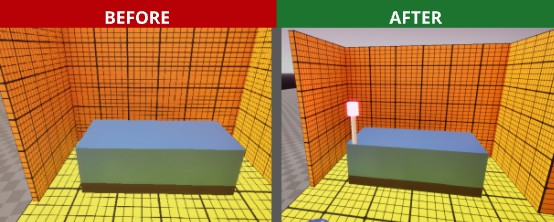
Problem: The player didn’t really know that the power to the generator was on; there was no visual information guiding the player.
Solution: Not only does the color turn from red to green, indicating the power is on, but when the player turns the power on, a cinematic moment will play showing the generator powering up.

Problem: The combat space was too boring and didn’t add enough challenge to the player.
Solution: I decided to create a Love Field where the player must follow an exact path, or else they will get hurt.
Fourth iteration
After receiving feedback on what I needed to iterate on, I decided to revisit my project and refine these key areas.
- Introduced more challenging and unique combat scenarios
- Redesigned large sections of the research facility layout to enhance player engagement
- Increased enemy variety throughout the level to raise difficulty and keep players challenged
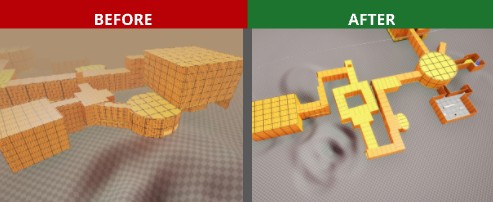
Problem: The combat space was very boring, and the player did not feel engaged.
Solution: Added variety and created two unique combat scenarios using a lava pit and a poisonous field.
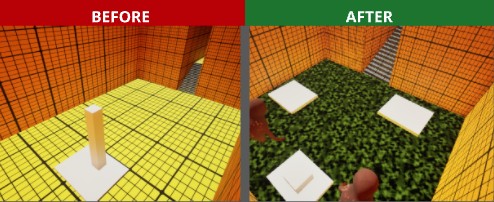
Problem:The room was very open with little to no cover it was not very challenging for the player
Solution: Challenged the player to not only watch out for the poisonous field but also deal with two big, tank-like enemies.
Fifth iteration
After receiving feedback on what I needed to iterate on, I decided to revisit my project and refine these key areas.
Redesigned a combat space in the castle area
Transformed the dull, unimmersive castle entrance through multiple iterations
Added a boss battle at the level’s end to provide a final major challenge
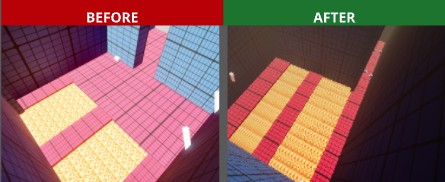
Problem: The combat area lacked immersion and failed to engage the player.
Solution: The player now has to fight many different enemy types.
Sixth iteration
After receiving feedback on what I needed to iterate on, I decided to revisit my project and refine these key areas.
- Introduced a new weapon type and added more ammo across the level to improve combat balance.
- Adjusted gun variables after player feedback indicated the weapons felt too weak.
- Began refining level geometry using updated assets from the environment pack.
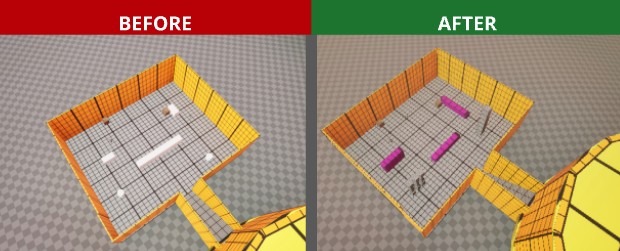
Problem: The research facility combat area still needed more work, as the challenge for the player was not there yet.
Solution: I decided to add more cover and color coding to the combat area to increase the challenge for the player.

Problem: The combat area was just a simple hallway with a lava pit on the floor—not very challenging.
Solution: The new combat space takes place inside a room where the player must fight off three flying enemies while trying to reach the other side.
Takeaways
Design Decisions and Final Thoughts
Heading into this project, I wanted to focus on combat, since many of my games have little to no combat and are more narratively driven. I wanted to create an action-packed level that feels very similar to classic Doom and Wolfenstein.
Over the last few months, I did pre-production, blocked out the level, and improved upon my original design. It was challenging, as many of my early combat spaces felt boring and not very engaging for the player. But thanks to the incredible feedback I received, I was able to iterate on several different combat spaces and ultimately create a unique and more engaging level.
After completing this personal project, I want to take some time to reflect on my decisions and what I’ve learned.
Takeaway 1: Creating rewarding and challenging combat is tough but achievable through iteration
Frequent playtesting and feedback led to major changes in my level’s combat scenarios.T
I iterated on enemy placement, cover, weapons, and encounter pacing to create a more dynamic experience.a
Through this process, I became much more confident in designing compound areas that feel both challenging and satisfying.k
Balancing all combat elements was difficult—but in the end, I created something I’m genuinely proud of.
Takeaway 2: Iteration is the key to success.
Adjusted cover placement, combat flow, enemy types, and weapon variety
Tweaked the overall feel and pacing of the levela
Learned something new with each version, which directly improved my level design skills
Allowed me to solve problems early, preventing delays later in development


